United States involvement in regime change
| History of U.S. expansion and influence |
|---|
United States involvement in regime change has entailed both overt and covert actions aimed at altering, replacing, or preserving foreign governments. In the latter half of the 19th century, the U.S. government initiated actions for regime change mainly in Latin America and the southwest Pacific, and included the Mexican–American, Spanish–American and Philippine–American wars. At the onset of the 20th century the United States shaped or installed friendly governments in many countries including Panama, Honduras, Nicaragua, Mexico, Haiti, and the Dominican Republic.
In the aftermath of World War II, the U.S. government expanded the geographic scope of its actions to foster regime change, as the country struggled with the Soviet Union for global leadership and influence within the context of the Cold War. Significant operations included the U.S. and UK-orchestrated 1953 Iranian coup d'état, the 1961 Bay of Pigs Invasion targeting Cuba, the anti-communist purge in Indonesia, and support for the Argentinian Dirty War, in addition to the U.S.'s traditional area of operations, Central America and the Caribbean. In addition, the U.S. has interfered in the national elections of many countries, including in Japan in the 1950s and 1960s to keep its preferred center-right Liberal Democratic Party in power using secret funds, in the Philippines to orchestrate the campaign of Ramon Magsaysay for president in 1953, and in Lebanon to help Christian parties in the 1957 elections using secret cash infusions.[1] The U.S. has executed at least 81 overt and covert known interventions in foreign elections during the period 1946–2000.[2]
Also after World War II, the United States in 1945 ratified[3] the UN Charter, the preeminent international law document,[4] which legally bound the U.S. government to the Charter's provisions, including Article 2(4), which prohibits the threat or use of force in international relations, except in very limited circumstances.[5] Therefore, any legal claim advanced to justify regime change by a foreign power carries a particularly heavy burden.[6]
Following the dissolution of the Soviet Union, the United States has led or supported wars to determine the governance of a number of countries. Stated U.S. aims in these conflicts have included fighting the War on Terror as in the 2001 Afghan war, or removing dictatorial and hostile regimes in the 2003 Iraq War and 2011 military intervention in Libya.
19th century interventions
1846: U.S.–Mexico War
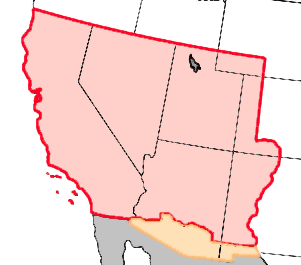
The Mexican–American War was an armed conflict between the United States of America and Mexico from 1846 to 1848 in the wake of the 1845 U.S. annexation of Texas, which Mexico considered part of its territory despite the 1836 Texas Revolution.
American forces occupied New Mexico and California, then invaded parts of Northeastern Mexico and Northwestern Mexico; Another American army captured Mexico City, and the war ended with a victory for the United States. The Treaty of Guadalupe Hidalgo specified the major consequence of the war: the forced Mexican Cession of the territories of Alta California and New Mexico to the U.S. in exchange for $18 million. In addition, the United States forgave debt owed by the Mexican government to U.S. citizens. Mexico accepted the loss of Texas and thereafter cited the Rio Grande as its national border. The war did not result in a regime change in Mexico.
1887–1889: Samoa
.svg.png)
The Samoan crisis was a confrontation between the United States, Germany and Great Britain from 1887 to 1889, with the powers backing rival claimants to the throne of the Samoan Islands during the Samoan Civil War.[7] The Second Samoan Civil War followed in 1898, involving the US (who backed the incumbent king) and Germany, eventually resulting, via the Tripartite Convention of 1899, in the partition of the Samoan Islands into American Samoa and German Samoa.[8][9]
1893–1917: U.S. empire and expansionism
1890s
1893: Kingdom of Hawaii
.svg.png)
Anti-monarchial elements, mostly Americans, in Hawaii, engineered the overthrow of the Kingdom of Hawaii. On January 17, 1893, the native monarch, Queen Lili'uokalani, was overthrown. Hawaii was initially reconstituted as an independent republic, but the ultimate goal of the action was the annexation of the islands to the United States, which was finally accomplished in 1898.
1898: Cuba and Puerto Rico
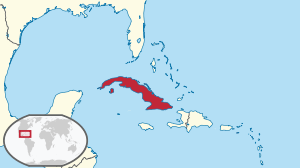
As part of the Spanish–American War, the United States invaded and occupied Spanish-ruled Cuba and Puerto Rico in 1898. Cuba was occupied by the U.S. from 1898 to 1902 under military governor Leonard Wood, and again from 1906 to 1909, in 1912 and from 1917 to 1922; governed by the terms of the Platt Amendment through 1934.
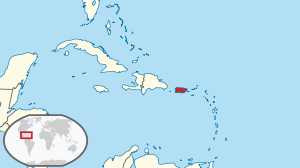
The Puerto Rican Campaign was an American military sea and land operation on the island of Puerto Rico during the Spanish–American War. The United States Navy attacked the archipelago's colonial capital, San Juan. Though the damage inflicted on the city was minimal, the Americans were able to establish a blockade in the city's harbor, San Juan Bay. The land offensive began on July 25 with 1,300 infantry soldiers. All military actions in Puerto Rico were suspended on August 13, after U.S. President William McKinley and French Ambassador Jules Cambon, acting on behalf of the Spanish government, signed an armistice whereby Spain relinquished its sovereignty over the territories of Puerto Rico, Cuba, the Philippines and Guam.
1899: Philippines
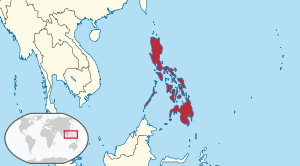
The Philippine–American War was part of a series of conflicts in the Philippine struggle for independence against United States occupation. Fighting erupted between US and Filipino revolutionary forces on February 4, 1899, and quickly escalated into the 1899 Battle of Manila. On June 2, 1899, the First Philippine Republic officially declared war against the United States.[10] The war officially ended on July 4, 1902.[11] This US intervention was intended to prevent regime change, and retain US control over the Philippines.
1898–1901: China
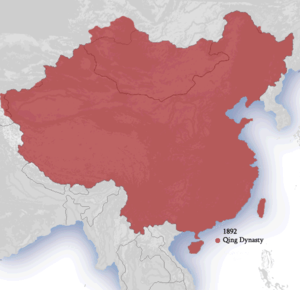
The Boxer Rebellion was a proto-nationalist movement in China between 1898 and 1901, so called because it was led by fighters who called themselves the Society of the Righteous and Harmonious Fists. The United States was part of an Eight-Nation Alliance that brought 20,000 armed troops to China, defeated the Imperial Chinese Army, and captured Beijing. The Eight-Nation Alliance was a military coalition formed to defeat the rebellion, and the eight nations, in addition to the US, were Japan, Russia, Britain, France, the Germany, Italy and Austria-Hungary.[12] The Boxer Protocol of September 7, 1901 ended the uprising.[13] This intervention did not result in regime change in China.
1900s
1903: Panama
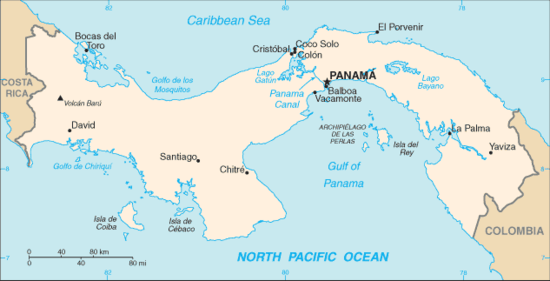
In 1903, the U.S. aided the secession of Panama from the Republic of Colombia. The secession was engineered by a Panamanian faction backed by the Panama Canal Company, a French–US corporation whose aim was the construction of a waterway across the Isthmus of Panama thus connecting the Atlantic and Pacific Oceans. In 1903, the U.S. signed the Hay-Herrán Treaty with Colombia, granting the United States use of the Isthmus of Panama in exchange for financial compensation.[14][15] amidst the Thousand Days' War. The Panama Canal was already under construction, and the Panama Canal Zone was carved out and placed under United States sovereignty. The US did not transfer the zone back to Panama until 2000.
1900s–1920s: Honduras
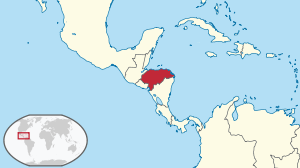
In what became known as the "Banana Wars," between the end of the Spanish–American War in 1898 and the inception of the Good Neighbor Policy in 1934, the U.S. staged many military invasions and interventions in Central America and the Caribbean.[16] The United States Marine Corps, which most often fought these wars, developed a manual called The Strategy and Tactics of Small Wars in 1921 based on its experiences. On occasion, the Navy provided gunfire support and Army troops were also used. The United Fruit Company and Standard Fruit Company dominated Honduras' key banana export sector and associated land holdings and railways. The U.S. staged invasions and incursions of US troops in 1903 (supporting a coup by Manuel Bonilla), 1907 (supporting Bonilla against a Nicaraguan-backed coup), 1911 and 1912 (defending the regime of Miguel R. Davila from an uprising), 1919 (peacekeeping during a civil war, and installing the caretaker government of Francisco Bográn), 1920 (defending the Bográn regime from a general strike), 1924 (defending the regime of Rafael López Gutiérrez from an uprising) and 1925 (defending the elected government of Miguel Paz Barahona) to defend US interests.[17] Writer O. Henry coined the term "Banana republic" in 1904 to describe Honduras.
1910s
1912–1933: Nicaragua

The U.S. government invaded Nicaragua in 1912 after intermittent US military landings and naval bombardments in the previous decades. The U.S. was providing political support to conservative-led forces who were rebelling against President José Santos Zelaya, a liberal. U.S. motives included disagreement with the proposed Nicaragua Canal, since the U.S. controlled the Panama Canal Zone, which included the Panama Canal, and President Zelaya's attempts to regulate access by foreigners to Nicaraguan natural resources. On November 17, 1909, two Americans were executed by order of Zelaya after the two men confessed to having laid a mine in the San Juan River with the intention of blowing up the Diamante. The U.S. justified the intervention by claiming to protect American lives and property. Zelaya resigned later that year. The U.S. occupied the country almost continuously from 1912 through 1933.
1914: Mexico
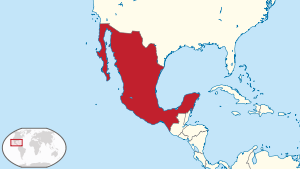
U.S. troops invaded Veracruz in Mexico in 1914 following the Tampico Affair. The US occupied the city for six months.
1915–1934: Haiti
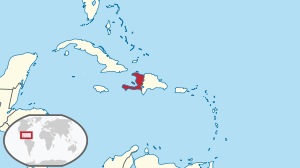
The U.S. occupied Haiti from 1915 to 1934. US banks had lent money to Haiti and requested U.S. government intervention. The U.S. installed a new government in 1917 and dictated the terms of a new Haitian constitution in 1917 that instituted changes that included an end to the prior ban on land ownership by non-Haitians. The Cacos (military group) were originally armed militias of formerly enslaved persons who rebelled and took control of mountainous areas following the Haitian Revolution in 1804. Such groups fought a guerilla war against the US occupation in what were known as the "Caco Wars."[18]
1916–1924: Dominican Republic

U.S. marines invaded the Dominican Republic and occupied the it from 1916 to 1924, and this was preceded by US military interventions in 1903, 1904, and 1914. The US Navy installed its personnel in all key positions in government and controlled the Dominican army and police.[19] Within a couple of days, the constitutional president, Juan Isidro Jimenes, resigned.[20]
WWI and interwar period
1918: Russia
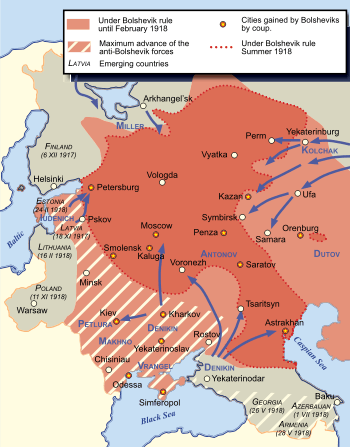
After the new Bolshevik government withdrew from World War I, the U.S. military together with forces of its Allies invaded Russia in 1918. Approximately 250,000 invading soldiers, including troops from Europe, the US and the Empire of Japan invaded Russia to aid the White Army against the Red Army of the new Soviet government in the Russian civil war. The invaders launched the North Russia invasion from Arkhangelsk and the Siberia invasion from Vladivostok. The invading forces included 13,000 U.S. troops whose mission after the end of World War I included the toppling of the new Soviet government and the restoration of the previous Tsarist regime. U.S. and other Western forces were unsuccessful in this aim and withdrew by 1920 but the Japanese military continued to occupy parts of Siberia until 1922 and the northern half of Sakhalin until 1925.[21]
1941: Panama
The United States government used its contacts in the Panama National Guard, which the U.S. had earlier trained, to orchestrate a coup against the government of Panama in October 1941. The U.S. had requested that the government of Panama allow it to build over 130 new military installations inside and outside of the Panama Canal Zone, and the government of Panama refused this request at the price suggested by the U.S.[22] President Arnulfo Arias fled the country and Ricardo Adolfo de la Guardia Arango, the leader of the coup and a friend of the US government, became president.[23]
Cold War era
1940s
1945–1950: South Korea
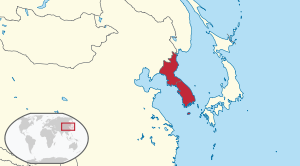
As the Empire of Japan surrendered in August 1945, under the leadership of Lyuh Woon-Hyung committees throughout Korea formed to coordinate transition to Korean independence. On August 28, 1945 these committees formed the temporary national government of Korea, naming it the People's Republic of Korea (PRK) a couple of weeks later.[24][25] On September 8, 1945, the United States government landed forces in Korea and thereafter established the United States Army Military Government in Korea (USAMGK) to govern Korea south of the 38th parallel north. The USAMGK staffed the governing administration with Japanese governors and many other Japanese officials who had been part of the brutal Japanese imperial colonial government and with Koreans who had collaborated with it, which made the government unpopular and engendered popular resistance.[26] USAMGK refused to recognize the PRK government, which had been formed to self-govern the country, and the Provisional Government of the Republic of Korea, which had been based in China during WWII and had fought against the Japanese, and then the USAMGK by military decree outlawed the PRK government.[27][28] In October 1948, USAMGK sent units to attack Koreans who were seeking Korean independence, and carried out several mass atrocities, including the killing hundreds of Korean civilians on Jeju Island who were suspected of supporting those in favor of independence.[29][30][31]
In 1952, the Joint Chiefs of Staff directed General Mark W. Clark to formulate a plan to overthrow South Korean President Syngman Rhee, fearing that the political crisis which arose from his authoritarian conduct would imperil military objectives. Operation Everready, as the plan was named, was shelved once Rhee yielded to American pressure and released arrested opposition leaders. The plan was revived for consideration in 1953 when it was feared that Rhee would not accept the Korean Armistice Agreement.[32][33]
1946–1949: China
The U.S. government provided military, logistical and other aid to the right-wing Chinese Nationalist Party (KMT) army led by Chiang Kai-shek in the Chinese Civil War against Chinese Communist Party forces. The US airlifted many KMT troops from central China to Manchuria. Approximately 50,000 U.S. troops were sent to guard strategic sites in Hupeh and Shandong. The U.S. trained and equipped KMT troops, and transported Korean troops and even enemy imperial Japanese troops back to help KMT forces to occupy Chinese zones and to contain Communist-controlled areas.[34] President Harry Truman explained that: "It was perfectly clear to us that if we told the Japanese to lay down their arms immediately and march to the seaboard, the entire country would be taken over by the Communists. We therefore had to take the unusual step of using the enemy as a garrison until we could airlift Chinese National troops to South China and send Marines to guard the seaports."[35] Within less than two years after the Sino-Japanese War, the KMT had received $4.43 billion from the United States—most of which was military aid.[34][36]
1946–1949: Greece
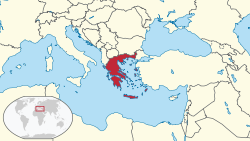
The British military together with Greek forces under control of the Greek government fought for control of the country in the Greek Civil War against the Democratic Army of Greece (DSE). The DSE was composed mostly of communist partisans who as part of the Greek People's Liberation Army (ELAS) by Summer 1944 had liberated nearly all of the country from the military occupation of the Third Reich.[37] By early 1947, the British government could no longer afford the huge cost of financing the war against DSE, and pursuant to the October 1944 Percentages Agreement between Winston Churchill and Joseph Stalin, Greece was to remain part of the Western sphere of influence. Accordingly, the British requested the US government to step in and the U.S. flooded the country with military equipment, military advisers and weapons.[38]:553–554[39]:129[40][41] With increased U.S. military aid, by September 1949 the Greek government eventually succeeded in winning.[42]:616–617
1952: Egypt
Project FF (the "FF" standing for "Fat Fucker") was a CIA program initially designed to modernize the Kingdom of Egypt under Farouk I. However, disillusionment with the king's ability to govern led Kermit Roosevelt Jr. to support efforts to replace the regime entirely. Upon hearing rumors of discontent within the Egyptian military, Roosevelt met with the leaders of the nationalist, anti-communist, Free Officers Movement, most notably future Egyptian president Gamal Abdel Nasser, and informed them of American support for their imminent coup d'état. On July 23, 1952, the Free Officers Movement toppled the monarchy and established the Republic of Egypt.[43]
1947–1970s: Italy
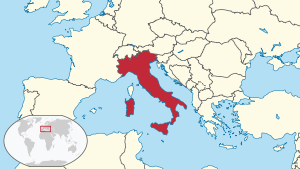
In 1947, the US-backed Christian Democrats (DC), led by Alcide De Gasperi, were losing popularity, and the Communist Party of Italy (PCI) was growing particularly fast due to its organizing efforts supporting sharecroppers in Sicily, Tuscany and Umbria, movements which were also bolstered by the reforms of Fausto Gullo, the Communist minister of agriculture.[44] The DC engineered the expulsion of all left-wing ministers from the cabinet on May 31. The PCI would not have a national position in government again for twenty years. De Gasperi did this under pressure from US Secretary of State George Marshall, who'd informed him that anti-communism was a pre-condition for receiving American aid,[45][46] and Ambassador James C. Dunn who had directly asked de Gasperi to dissolve the parliament and remove the PCI.[47]
The U.S. Central Intelligence Agency (CIA) acknowledged giving $1 million to Italian centrist parties for the 1948 election. The CIA also publishing forged letters in order to discredit the leaders of the Italian Communist Party (PCI). U.S. agencies undertook a campaign of writing ten million letters, made numerous short-wave radio broadcasts and funded the publishing of books and articles, all of which warned the Italians of what was believed to be the consequences of a communist victory. Time magazine backed the campaign for U.S. domestic audiences, featuring the Christian Democracy Party leader and Prime Minister Alcide De Gasperi on its cover and in its lead story on April 19, 1948.[48][49][50][51] Meanwhile the US secretly convinced the British Labour Party to pressure social democrats to end their support for PCI, and foster a devastating split in the Italian Socialist Party.[52]
CIA ultimately spent at least $65 million helping elect Italian politicians,[53] including "every Christian Democrat who ever won a national election in Italy."[54]
1949: Syria
.svg.png)
The democratically elected government of Shukri al-Quwatli was overthrown by a junta led by the Syrian Army chief of staff at the time, Husni al-Za'im, who became President of Syria on April 11, 1949. The exact nature of U.S. involvement in that coup is still highly controversial. However, it is well documented that the construction of the Trans-Arabian Pipeline, which had been held up in the Syrian parliament, was approved by Za'im, the new president, just over a month after the coup.
1950s
1953: Iran
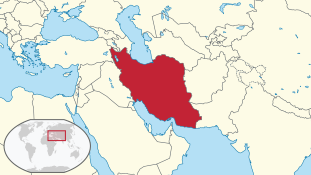
The 1953 Iranian coup d'état, (known in Iran as the "28 Mordad coup"[55]) was the overthrow of the democratically elected government of Iranian Prime Minister Mohammad Mosaddegh on August 19, 1953, orchestrated by the intelligence agencies of the United Kingdom (under the name "Operation Boot") and the United States (under the name "TPAJAX Project").[56][57][58] The coup saw the transition of Mohammad-Rezā Shāh Pahlavi from a constitutional monarch to an authoritarian one who relied heavily on United States government support to hold on to power until his own overthrow in February 1979.[59]
1954: Guatemala
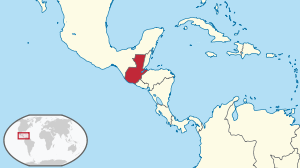
In a CIA operation code named Operation PBSUCCESS, the U.S. government executed a coup that was successful in overthrowing the democratically-elected government of President Jacobo Árbenz and installed Carlos Castillo Armas, the first of a line of brutal right-wing dictators, in its place.[60][61][62] The perceived success of the operation made it a model for future CIA operations because the CIA lied to the president of the United States when briefing him regarding the number of casualties.[63]
1955–1960: Laos

The U.S. government took over funding of the military budget of the Royal Lao Government in its civil war against the Pathet Lao communist movement, which had taken control of a part of the country. The US paid for 100% of the government's military budget and by 1957 was paying the salaries of the Royal Lao Army. Also the US set up the covert Programs Evaluation Office to field US civilian personnel with former US military experience because a treaty the US had signed expressly forbade US military advisors.[64][65] By July 1959 however, the US sent in US commando units dressed as civilians to train the Royal Lao Army.[66] These interventions did not result in regime change.
Failed coup plots against Syria
- 1956 Operation Straggle failed coup plot against Syria. The CIA made plans for a coup for late October 1956 to topple the Syrian government. The plan entailed takeover by the Syrian military of key cities and border crossings.[67][68][69] The plan was postponed when Israel invaded Egypt in October 1956 and US planners thought their operation would be unsuccessful at a time when the Arab world is fighting "Israeli aggression." The operation was uncovered and American plotters had to flee the country.[70]
- 1957 Operation Wappen failed coup plan against Syria. A second coup attempt the following year called for assassination of key senior Syrian officials, staged military incidents on the Syrian border to be blamed on Syria and then to be used as pretext for invasion by Iraqi and Jordanian troops, an intense US propaganda campaign targeting the Syrian population, and "sabotage, national conspiracies and various strong-arm activities" to be blamed on Damascus.[71][72][69][73] This operation failed when Syrian military officers paid off with millions of dollars in bribes to carry out the coup revealed the plot to Syrian intelligence. The U.S. Department of State denied accusation of a coup attempt and along with US media accused Syria of being a "satellite" of the USSR.[72][74][75]
1957–1959: Indonesia
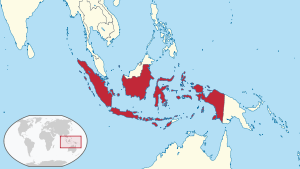
As a founding member of the Non-Aligned Movement and host of the April 1955 Bandung Conference, Indonesia was charting a course toward an independent foreign policy that was not militarily committed to either side in the Cold War.[76][77] Starting in 1957, the CIA supported a failed coup plan by rebel Indonesian military officers. CIA pilots, such as Allen Lawrence Pope, piloted planes operated by CIA front organization Civil Air Transport (CAT) that bombed civilian and military targets in Indonesia. The CIA instructed CAT pilots to target commercial shipping in order to frighten foreign merchant ships away from Indonesian waters, thereby to weaken the Indonesian economy and thus to destabilize the democratically elected government of Indonesia. The CIA aerial bombardment resulted in the sinking of several commercial ships[78] and the bombing of a marketplace that killed many civilians.[79] The coup attempt failed at that time[80] and US President Eisenhower denied any US involvement.[81]
1958: Lebanon
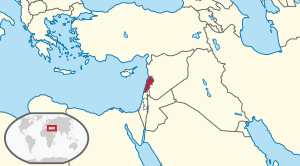
The U.S. launched Operation Blue Bat in July 1958 to intervene in the 1958 Lebanon crisis. This was the first application of the Eisenhower Doctrine, according to which the U.S. was to intervene to protect regimes it considered threatened by international communism. The goal of the operation was to bolster the pro-Western Lebanese government of President Camille Chamoun against internal opposition and threats from Syria and Egypt.
1959: Iraq
Richard Sale of United Press International, citing Adel Darwish and other experts, has reported that the October 1959 assassination attempt on Iraqi Prime Minister Abd al-Karim Qasim involving a young Saddam Hussein and other Ba'athist conspirators was a collaboration between the CIA and Egyptian intelligence.[82] Bryan R. Gibson has challenged the veracity of Sale and Darwish, citing declassified documents that indicate the CIA was blindsided by the timing of the assassination attempt on Qasim and that the National Security Council "had just reaffirmed [its] nonintervention policy" six days before it occurred.[83] Although the assassination attempt failed after Saddam (who was only supposed to provide cover) opened fire on Qasim—forcing Saddam to spend more than three years in exile in the Egyptian-led United Arab Republic (UAR) under threat of death if he returned to Iraq—it led to widespread exposure for Saddam and the Ba'ath within Iraq, where both had previously languished in obscurity, and later became a crucial part of Saddam's public image during his tenure as President of Iraq.[84][85] It is possible that Saddam visited the U.S. embassy in Cairo during his exile.[86]
1960s
1960: Laos
On August 9, 1960, Captain Kong Le with his paratroop battalion seized control of the administrative capital city of Vientiane in a bloodless coup on a "Neutralist" platform with the stated aims of ending the civil war raging in Laos, ending foreign interference in the country, ending the corruption caused by foreign aid, and better treatment for soldiers.[87][88] With CIA support, Field Marshal Sarit Thanarat, the prime minister of Thailand, set up a covert Thai military advisory group, called Kaw Taw. Kaw Taw together with the CIA orchestrated a November 1960 counter-coup against the new Neutralist government in Vientiane, supplying artillery, artillerymen, and advisers to General Phoumi Nosavan, first cousin of Sarit. It also deployed the CIA-sponsored Police Aerial Reinforcement Unit (PARU) to operations within Laos.[89] With the help of CIA front organization Air America to airlift war supplies and with other U.S. military assistance and covert aid from Thailand, General Phoumi Nosavan's forces captured Vientiane in November 1960.[90][91]
1961: Bay of Pigs

The CIA orchestrated a force composed of CIA-trained Cuban exiles to invade Cuba with support and equipment from the US military, in an attempt to overthrow the Cuban government of Fidel Castro. The invasion was launched in April 1961, three months after John F. Kennedy assumed the presidency in the United States. The Cuban armed forces, trained and equipped by Eastern Bloc nations, defeated the invading combatants within three days.
1960s: Cuba
Operation MONGOOSE was a years' long US government effort to overthrow the government of Cuba.[92] The operation included economic warfare, including an embargo against Cuba, "to induce failure of the Communist regime to supply Cuba's economic needs," a diplomatic initiative to isolate Cuba, and psychological operations "to turn the peoples' resentment increasingly against the regime."[93] The economic warfare prong of the operation also included the infiltration of CIA operatives to carry out many acts of sabotage against civilian targets, such as a railway bridge, a molasses storage facilities, an electric power plant, and the sugar harvest, notwithstanding Cuba's repeated requests to the United States government to cease its armed operations.[94][93] In addition, the CIA orchestrated a number of assassination attempts against Fidel Castro, head of government of Cuba, including attempts that entailed CIA collaboration with the American mafia.[95][96][97]
1961–1964: Brazil
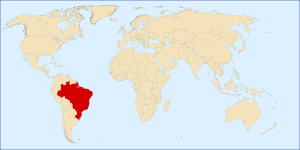
When the president of Brazil resigned in August 1961, he was lawfully succeeded by João Belchior Marques Goulart, the democratically elected vice president of the country.[98] João Goulart was a proponent of democratic rights, the legalization of the Communist Party, and economic and land reforms, but the US government insisted that he impose a program of economic austerity. The United States government implemented a plan with the code name Operation Brother Sam for the destabilization of Brazil, by cutting off aid to the Brazilian government, providing aid to state governors of Brazil who opposed the new president, and encouraging senior Brazilian military officers to seize power and to back army chief of staff General Humberto de Alencar Castelo Branco as coup leader.[99][100] General Branco led the April 1964 overthrow of the constitutional government of President João Goulart and was installed as first president of the military regime, immediately declaring a state of siege and arresting more than 50,000 political opponents within the first month of seizing power, while the US government expressed approval and re-instituted aid and investment in the country.[101]
1963: Iraq
Several sources, notably Said Aburish, have alleged that the February 1963 coup that resulted in the formation of a Ba'athist government in Iraq was "masterminded" by the CIA.[102] However, no declassified U.S. documents have verified this allegation.[103] Tareq Y. Ismael, Jacqueline S. Ismael, and Glenn E. Perry state that "Ba'thist forces and army officers overthrew Qasim on February 8, 1963, in collaboration with the CIA."[104] Conversely, Gibson argues that "the preponderance of evidence substantiates the conclusion that the CIA was not behind the February 1963 B'athist coup."[105] The U.S. offered material support to the new Ba'athist government after the coup, despite a bloody anti-communist purge and Iraqi atrocities against Kurdish rebels and civilians.[106] Because of this, Nathan Citino asserts: "Although the United States did not initiate the 14 Ramadan coup, at best it condoned and at worst it contributed to the violence that followed."[107] The Ba'athist government collapsed in November 1963 over the question of unification with Syria (where a rival branch of the Ba'ath Party had seized power in March).[108] There has been a great deal of academic discussion regarding allegations from King Hussein of Jordan and others that the CIA (or other U.S. agencies) provided the Ba'athist government with lists of communists and other leftists, who were then arrested or killed by the Ba'ath Party's militia—the National Guard. Gibson and Hanna Batatu emphasize that the identities of Iraqi Communist Party members were publicly known and that the Ba'ath would not have needed to rely on U.S. intelligence to identify them, whereas Citino considers the allegations plausible because the U.S. embassy in Iraq had actually compiled such lists, and because Iraqi National Guard members involved in the purge received training in the U.S.[109][110][111]
1963: Vietnam
Although the United States was allied with South Vietnam during the Vietnam War, the Kennedy administration had grown increasingly frustrated with South Vietnamese President Ngo Dinh Diem's corrupt and repressive rule. In light of Diem's refusal to adopt reforms, American officials debated whether they should support efforts to replace him. These debates resulted in the dispatch of Cable 243 on August 24, 1963, which instructed United States Ambassador to South Vietnam, Henry Cabot Lodge Jr., to "examine all possible alternative leadership and make detailed plans as to how we might bring about Diem's replacement if this should become necessary". Lodge and his liaison officer, Lucien Conein, established contact with discontented Army of the Republic of Vietnam officers and stimulated their resolve to overthrow Diem. These efforts culminated in a coup d'etat on November 2, 1963, during which Diem and his brother were assassinated.[112]
The Pentagon Papers concluded that "Beginning in August of 1963 we variously authorized, sanctioned and encouraged the coup efforts of the Vietnamese generals and offered full support for a successor government. In October we cut off aid to Diem in a direct rebuff, giving a green light to the generals. We maintained clandestine contact with them throughout the planning and execution of the coup and sought to review their operational plans and proposed new government."[113]
1965–66: Dominican Republic
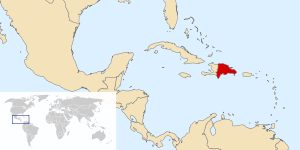
In the Dominican Civil War, a junta led by President Joseph Donald Reid Cabral was battling "constitutionalist" or "rebel" forces who advocated restoring to power the Dominican Republic's first ever democratically elected president, President Juan Emilio Bosch Gaviño, whose term had been cut short by a coup. The U.S. launched "Operation Power Pack," a US military operation to interpose the US military between the rebels and the junta's forces so as to prevent the rebel's advance and possibly victory.[114][115] Most civilian advisers had recommended against immediate intervention hoping that the junta could bring an end to the civil war but US President Lyndon B. Johnson took the advice of his Ambassador in Santo Domingo, William Tapley Bennett, who suggested that the US intervene.[116] Chief of Staff General Wheeler told a subordinate: "Your unannounced mission is to prevent the Dominican Republic from going Communist."[117] A fleet of 41 US vessels was sent to blockade the island as the US invaded. Ultimately, 42,000 soldiers and marines were ordered to the Dominican Republic and the US occupied the country.[118]
1965–1967: Indonesia
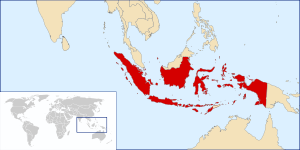
Junior army officers and the commander of the palace guard of President Sukarno accused senior Indonesian military brass of planning a CIA-backed coup against President Sukarno and killed six senior generals on October 1, 1965. General Muhammad Suharto and other senior military officers attacked the junior officers on the same day and accused the Communist Party of Indonesia (PKI) of orchestrating the killing of the six generals.[119] The army launched a propaganda campaign based on lies and riled up civilian mobs to attack those believed to be PKI supporters and other political opponents. Indonesian government forces with collaboration of some civilians perpetrated mass killings over many months. The CIA acknowledged that "in terms of the number of people killed, the anti-PKI massacres in Indonesia rank as one of the worst mass murders of the 20th Century."[120] Estimates of the number of civilians killed range from a half million to a million[121][122][123] but more recent estimates put the figure at two to three million.[124][125] US Ambassador Marshall Green encouraged the military leaders to act forcefully against the political opponents.[120] In 2017, declassified documents from the U.S. Embassy in Jakarta have confirmed that the US had detailed, ongoing knowledge of the mass killings and actively facilitated and encouraged them for its own geopolitical interests.[126][127][128][129] US diplomats admitted to journalist Kathy Kadane in 1990 that they had provided the Indonesian army with thousands of names of alleged PKI supporters and other alleged leftists, and that the U.S. officials then checked off from their lists those who had been murdered.[130][131] President Sukarno's base of support was largely annihilated, imprisoned and the remainder terrified, and thus he was forced out of power in 1967, replaced by an authoritarian military regime led by General Suharto.[132][133] Some scholars are now referring to the mass killings as a genocide.[134][135][136]
1970s
1971: Bolivia
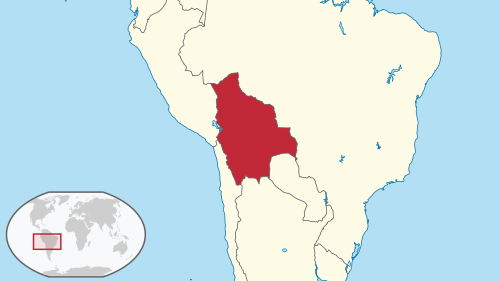
The U.S. government supported the 1971 coup led by General Hugo Banzer that toppled President Juan José Torres of Bolivia.[137][138] Torres had displeased Washington by convening an "Asamblea del Pueblo" (People's Assembly or Popular Assembly), in which representatives of specific proletarian sectors of society were represented (miners, unionized teachers, students, peasants), and more generally by leading the country in what was perceived as a left wing direction. Banzer hatched a bloody military uprising starting on August 18, 1971 that succeeded in taking the reigns of power by August 22, 1971. After Banzer took power, the U.S. provided extensive military and other aid to the Banzer dictatorship as Banzer cracked down on freedom of speech and dissent, tortured thousands, "disappeared" and murdered hundreds, and closed labor unions and the universities.[139][140] Torres, who had fled Bolivia, was kidnapped and assassinated in 1976 as part of Operation Condor, the US-supported campaign of political repression and state terrorism by South American right-wing dictators.[141][142][143]
1972–1975: Iraq
The U.S. secretly provided millions of dollars for the Kurdish insurgency supported by Iran against the Iraqi government.[144][145] The U.S. role was so secret even the US State Department and the U.S. "40 Committee," created to oversee covert operations, were not informed. The troops of the Kurdish Democratic Party were led by Mustafa Barzani. Notably, unbeknownst to the Kurds, this was a covert regime change action the US wanted to fail, intended only to drain the resources of the country.[146][147] The U.S. abruptly ceased support for the Kurds in 1975 and, despite Kurdish pleas for help, refused to extend even humanitarian aid to the thousands of Kurdish refugees created as a result of the collapse of the insurgency.[148][149]
1973: Chile
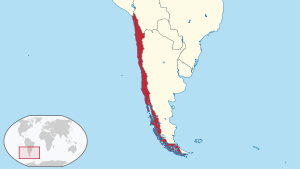
The democratically elected President Salvador Allende was overthrown by the Chilean armed forces and national police. This followed an extended period of social and political unrest between the right dominated Congress of Chile and Allende, as well as economic warfare waged by the U.S. government.[150] As a prelude to the coup, the chief of staff of the Chilean army, René Schneider, a general dedicated to preserving the constitutional order, was assassinated in 1970 during a botched kidnapping attempt backed by the CIA.[151][152] The regime of Augusto Pinochet that came to power with the coup is notable for having, by conservative estimates, disappeared some 3200 political dissidents, imprisoned 30,000 (many of whom were tortured), and forced some 200,000 Chileans into exile.[153][154][155] The CIA, through Project FUBELT (also known as Track II), worked secretly to engineer the conditions for the coup. The U.S. initially denied any involvement however many relevant documents have been declassified in the decades since.[156]
1979–1989: Afghanistan

In what was known as "Operation Cyclone," the U.S. government secretly provided weapons and funding for a collection of warlords and several factions of Jihadi guerillas known as the Mujahideen of Afghanistan fighting to overthrow the Afghan government and the Soviet military forces that supported it. Through the Inter-Services Intelligence (ISI) of Pakistan, the US channeled training, weapons and money for Afghan fighters, including jihadis who later became known as the Taliban, and at an estimated cost of $800 million for as many as 35,000 Arab foreign fighters.[157][158][159][160] Afghan Arabs also "benefited indirectly from the CIA's funding, through the ISI and resistance organizations,"[161][162] Some of the CIA's greatest Afghan beneficiaries were Arabist commanders such as Jalaluddin Haqqani and Gulbuddin Hekmatyar who were key allies of Osama Bin Laden over many years.[163][164][165] Some of the CIA-funded militants would become part of Al Qaeda later on, and included Osama Bin Laden, according to former Foreign Secretary Robin Cook and other sources.[166][167][168][169][170] However, these allegations are rejected by Steve Coll ("If the CIA did have contact with bin Laden during the 1980s and subsequently covered it up, it has so far done an excellent job"),[171] Peter Bergen ("The theory that bin Laden was created by the CIA is invariably advanced as an axiom with no supporting evidence"),[172] and Jason Burke ("It is often said that bin Laden was funded by the CIA. This is not true, and, indeed, would have been impossible given the structure of funding that General Zia ul–Haq, who had taken power in Pakistan in 1977, had set up").[173] Although Operation Cyclone officially ended in 1989 with the withdrawal of Soviet troops from Afghanistan, U.S. government funding for the Mujahideen continued through 1992, when the Mujahideen overran the Afghan government in Kabul.[174]
1980s
1980–1992: El Salvador
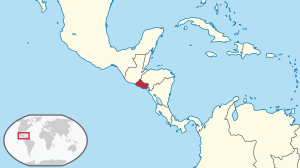
The government of El Salvador fought a bloody civil war against the Farabundo Martí National Liberation Front (FMLN), an umbrella organization of leftist political opposition groups, and against leaders of agricultural cooperatives, labor leaders and others who advocated for land reform and better conditions for "campesinos" (tenant farmers and other agrarian laborers) that supported the FMLN. The Salvadoran army organized military death squads to terrorize the rural civil population to cease its support for the FMLN.[175] Government forces killed more than 75,000 civilians during the war 1980–1992.[176][177][178][179][180][181] The U.S. government provided military training and weapons for the Salvadoran military. The Atlacatl Battalion, a counter-insurgency battalion, was organized in 1980 at the US Army School of the Americas and had a leading role in the "scorched earth" military policy against the FLMN and the rural villages that supported it. Atlacatl soldiers were equipped and directed by U.S. military advisers operating in El Salvador.[182][183][184] The Atlacatl battalion also participated in the El Mozote massacre in December 1981.[185] By May 1983, US officers took over positions in the top levels of the Salvadoran military, were making critical decisions and running the war.[186][187][188][189] A US Congressional fact finding commission found that the Salvadoran military's "drying up the ocean" policy of repression entailed eliminating "entire villages from the map, to isolate the guerrillas, and deny them any rural base off which they can feed."[190] The "drying up the ocean" or "scorched earth" strategy was based on tactics similar to those being employed by the junta's counter-insurgency in neighboring Guatemala and were primarily derived and adapted from U.S. strategy during the Vietnam War and taught by American military advisors.[191][192]
1982–1989: Nicaragua

The U.S. government attempted to topple the government of Nicaragua by secretly arming, training and funding the Contras, a millitant group based in Honduras that was created to sabotage Nicaragua and to destabilize the Nicaraguan government.[193][194][195][196] As part of the training, the CIA distributed a detailed "terror manual" entitled "Psychological Operations in Guerrilla War," which instructed the Contras, among other things, on how to blow up public buildings, to assassinate judges, to create martyrs, and to blackmail ordinary citizens.[197] In addition to orchestrating the Contras, the U.S. government also blew up bridges and mined Corinto harbor, causing the sinking of several civilian Nicaraguan and foreign ships and many civilian deaths.[198][199][200][201] After the Boland Amendment made it illegal for the U.S. government to provide funding for Contra activities, the administration of President Reagan secretly sold arms to the Iranian government to fund a secret U.S. government apparatus that continued illegally to fund the Contras, in what became known as the Iran-Contra affair.[202] The U.S. continued to arm and train the Contras even after the Sandanista government of Nicaragua won the elections of 1984.[203][204]
1983: Grenada
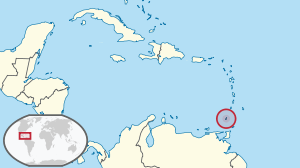
In what the U.S. government called Operation Urgent Fury, the U.S. military invaded the tiny island nation of Grenada to remove the Marxist government of Grenada that the Reagan Administration found objectionable.[205][206] The United Nations General Assembly called the U.S. invasion "a flagrant violation of international law"[207] but a similar resolution widely supported in the United Nations Security Council was vetoed by the U.S.[208][209]
1989: Panama

In December 1989, in a military operation code-named Operation Just Cause, the U.S. invaded Panama. President George H. W. Bush launched the war ten years after the Torrijos–Carter Treaties were ratified to transfer control of the Panama Canal from the United States to Panama by the year 2000. The U.S. deposed de facto Panamanian leader, general, and dictator Manuel Noriega and brought him to the United States, president-elect Guillermo Endara was sworn into office, and the Panamanian Defense Force was dissolved.
Post-Cold War
1990s
1991: Kuwait

After Iraq invaded Kuwait in August 1990, the US government strenuously lobbied governments represented on the UN Security Council to support a resolution authorizing UN members states to use "all necessary means" for removing Iraqi forces from Kuwait.[210] UN Security Council Resolution 678, including such language, was passed and the US assembled a 34 state coalition force to invade. The operation was launched in January 1991 and had US code name "Operation Desert Storm." The U.S.-led coalition repelled the Iraqi forces from Kuwait and returned to power the emir, Sheikh Jaber al-Ahmad al-Sabah.[211]
1991: Haiti
- 1991 Haiti. Eight months after what was widely considered the first honest election held in Haiti, the newly elected President Jean-Bertrand Aristide was deposed by the Haitian army. It is alleged by some that the CIA "paid key members of the coup regime forces, identified as drug traffickers, for information from the mid-1980s at least until the coup."[212] Coup leaders Cédras and François had received military training in the United States.[213]
1991–2003: Iraq
.svg.png)
Following the Persian Gulf War in 1991, the U.S. government successfully advocated that the pre-war sanctions[214] be made more comprehensive, which the UN Security Council did in April 1991 by adopting Resolution 687.[215][216] After the UN imposed the tougher sanctions, U.S. officials stated in May 1991—when it was widely expected that the Iraqi government of Saddam Hussein faced collapse[217][218]—that the sanctions would not be lifted unless Saddam was ousted.[219][220][221] In the subsequent president's administration, U.S. officials took the position that the sanctions could be lifted if Iraq complied with all of the UN resolutions it was violating, not just with UN weapons inspections.[222] The effects of the sanctions on the Iraqi civilian population, including the child mortality rate, were disputed at the time. Whereas it was widely believed at the time that the sanctions caused a major rise in child mortality, recent research has shown that commonly cited data were fabricated by the Iraqi government and that "there was no major rise in child mortality in Iraq after 1990 and during the period of the sanctions."[223][224][225][226][227]
1994–2000: Iraq
The CIA launched DBACHILLES, a coup d'état operation against the Iraqi government, recruiting Ayad Allawi, who headed the Iraqi National Accord, a network of Iraqis who opposed the Saddam Hussein government, as part of the operation. The network included Iraqi military and intelligence officers but was penetrated by people loyal to the Iraqi government.[228][229][230] Also using Ayad Allawi and his network, the CIA directed a government sabotage and bombing campaign in Baghdad between 1992 and 1995, against targets that—according to the Iraqi government at the time—killed many civilians including people in a crowded movie theater.[231] The CIA bombing campaign may have been merely a test of the operational capacity of the CIA's network of assets on the ground and not intended to be the launch of the coup strike itself.[231] The coup was unsuccessful, but Ayad Allawi was later installed as prime minister of Iraq by the Iraq Interim Governing Council, which had been created by the U.S.-led coalition following the March 2003 invasion and occupation of Iraq. As a non-covert measure, the U.S. in 1998 enacted the "Iraq Liberation Act," which states, in part, that "It should be the policy of the United States to support efforts to remove the regime headed by Saddam Hussein from power in Iraq," and appropriated funds for U.S. aid "to the Iraqi democratic opposition organizations."[232]
1997: Indonesia
The Clinton administration saw an opportunity to oust Indonesian President Suharto when his rule over Indonesia became increasingly precarious in the aftermath of the 1997 Asian Financial Crisis. American officials sought to exacerbate Indonesia's monetary crisis by having the International Monetary Fund oppose Suharto's efforts to establish a currency board to stabilize the rupiah, thereby provoking discontent. IMF Director Michel Camdessus boasted that, "We created the conditions that obliged President Suharto to leave his job". Former US Secretary of State Lawrence Eagleburger would later remark, "We were fairly clever in that we supported the IMF as it overthrew [Suharto]. Whether that was a wise way to proceed is another question. I'm not saying Mr. Suharto should have stayed, but I kind of wish he had left on terms other than because the IMF pushed him out."[233][234] Hundreds would die in the crisis that followed.
2000s
2000: Yugoslavia
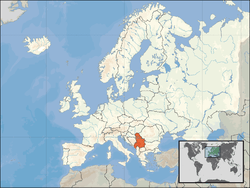
From the period of 1998 to 2000, just over $100,000,000 was channeled from the U.S. State Department through Quangos to opposition parties in order to bring about regime change in Yugoslavia.[235] Following issues regarding the results of the Yugoslav elections of 2000, the U.S. State Department heavily supported opposition groups such as Otpor! through the supply of promotional material and also, consulting services via Quangos.[236] United States involvement served to speed up and organize dissent through exposure, resources, moral and material encouragement, technological aid and professional advice.[235] This campaign was one of the factors contributing to the Bulldozer Revolution and thus the overthrow of the long standing president Slobodan Milošević on October 5, 2000.[235]
2005: Iran
According to U.S. and Pakistani intelligence sources, beginning in 2005 the U.S. government secretly encouraged and advised a Pakistani Balochi militant group named Jundullah that is responsible for a series of deadly guerrilla raids inside Iran.[237] Jundullah, led by Abdolmalek Rigi (sometimes written as Abd el Malik Regi), also known as "Regi," was suspected of being associated with Al Qaeda, a charge that the group has denied. ABC News learned from tribal sources that money for Jundullah was routed to the group through Iranian exiles. "They are suspected of having links to Al Qaeda and they are also thought to be tied to the drug culture," according to Professor Vali Nasr.[238] U.S. intelligence sources later claimed that the orchestration of Jundallah operations was, in actuality, an Israeli Mossad (intelligence agency) false flag operation that Israeli agents disguised to make it appear to be the work of American intelligence.[239]
2006–07: Palestinian territories

The U.S. government pressured the Fatah faction of the Palestinian leadership to topple the Hamas government of Prime Minister Ismail Haniyeh.[240][241][242] The Bush Administration was displeased with the government that the majority of the Palestinian people elected in the January Palestinian legislative election of 2006.[240][241][243] The U.S. government set up a secret training and armaments program that received tens of millions of dollars in Congressional funding, but also, like in the Iran-contra scandal, a more secret Congress-circumventing source of funding for Fatah to launch a bloody war against the Haniyeh government.[240][244][245] The war was brutal, with many casualties and with Fatah kidnapping and torturing civilian leaders of Hamas, sometimes in front of their own families, and setting fire to a university in Gaza. When the government of Saudi Arabia attempted to negotiate a truce between the sides so as to avoid a wide-scale Palestinian civil war, the U.S. government pressured Fatah to reject the Saudi plan and to continue the effort to topple the Haniyeh government.[240] Ultimately, the Haniyeh government was prevented from ruling over all of the Palestinian territories, with Hamas retreating to the Gaza strip and Fatah retreating to the West Bank.
Post–2005: Syria
.svg.png)
Since 2006, the State Department has funneled at least $6 million to the anti-government satellite channel Barada TV, associated with the exile group Movement for Justice and Development in Syria. This secret backing continued under the Obama administration, even as the US publicly rebuilt relations with Bashar Al-Assad.[246][247]
After the outbreak of the Syrian civil war, the U.S. government called on Syrian President Bashar Al Assad to "step aside" and imposed an oil embargo against the Syrian government to bring it to its knees.[248][249][250] Starting in 2013, the U.S. also provided training, weapons and cash to Syrian vetted "moderate" rebels,[251][252] and in 2014, the Supreme Military Council.[253][254]
In March 2017 Ambassador Nikki Haley told a group of reporters that the US's priority in Syria was no longer on "getting Assad out."[255] Earlier that day at a news conference in Ankara, Secretary of State Rex Tillerson also said that the "longer term status of President Assad will be decided by the Syrian people."[256] While the US Defense Department's program to aid predominantly Kurdish rebels fighting the Islamic State of Iraq and the Levant (ISIL) will continue, it was revealed in July 2017 that US President Trump had ordered a "phasing out" of the CIA's support for anti-Assad rebels.[257]
2010s
2011 Libya
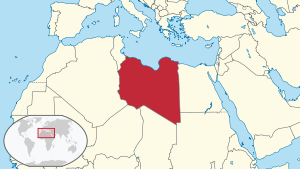
The US was part of a multi-national coalition that undertook the 2011 military intervention in Libya to implement United Nations Security Council Resolution 1973, which was taken in response to events during the Libyan Civil War,[258] and military operations began, with US and British naval forces firing over 110 Tomahawk cruise missiles,[259] the French and British Air Forces[260] undertaking sorties across Libya and a naval blockade by Coalition forces.[261]
2015–present Yemen
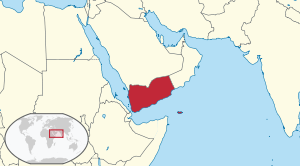
The U.S. has been supporting the intervention by Saudi Arabia and other despotic regimes of the Persian Gulf in the Yemeni Civil War. The Yemeni Civil War began in 2015 between two sides, each claiming at that time to support the legitimate government of Yemen:[262] Houthi forces, which control the capital Sana'a and had supported former president Ali Abdullah Saleh, fighting against forces based in Aden and loyal to the government of Abdrabbuh Mansur Hadi.[263] The Saudi-led offensive is aimed at restoring Hadi to power, and is allied with various local factions.[264] The Saudi Arabian-led intervention has been widely condemned due to its widespread bombing of urban and other civilian areas, including schools and hospitals.[265][266][267] The U.S. military provides targeting assistance and intelligence and logistical support for the Saudi-led bombing campaign,[268] including aerial refueling.[269][270] The US also provides weapons and bombs,[271] including, according to a Human Rights Watch (HRW) report, cluster bombs outlawed in much of the world and used by Saudi Arabia in the conflict.[272][273] The US has been criticized for providing weapons and bombs knowing that Saudi bombing has been indiscriminately targeting civilians and violating the laws of war.[274][275][276] It was been suggested that the U.S. government is legally a "co-belligerent" in the conflict, in which case U.S. military personnel could be prosecuted for war crimes,[277][278][279] and a U.S. senator has accused the U.S. of complicity in Yemen's humanitarian catastrophe, with millions facing starvation.[280][281] As of May 2018, the civil war is at a stalemate.
Covert involvements
During the modern era, Americans were involved in numerous covert regime change efforts. During the Cold War in particular, the U.S. government secretly supported military coups that overthrew democratically elected governments in Syria in 1949, Iran in 1953, Guatemala in 1954, the Congo Crisis of 1960, Brazil in 1964 and Chile in 1973.
See also
Notes
- ↑ The Washington Post, October 13, 2016, "The Long History of the US Interfering with Elections Elsewhere," https://www.washingtonpost.com/news/worldviews/wp/2016/10/13/the-long-history-of-the-u-s-interfering-with-elections-elsewhere/ Archived June 16, 2017, at the Wayback Machine.
- ↑ New York Times, February 17, 2019, "Russia Isn't the Only One Meddling in Elections, We Do It, Too," https://www.nytimes.com/2018/02/17/sunday-review/russia-isnt-the-only-one-meddling-in-elections-we-do-it-too.html Archived February 19, 2018, at the Wayback Machine. citing Conflict Management and Peace Science, September 19, 2016 "Partisan Electoral Interventions by the Great Powers: Introducing the PEIG Dataset," http://journals.sagepub.com/doi/pdf/10.1177/0738894216661190
- ↑ United Nations Foundation, August 20, 2015, "The American Ratification of the UN Charter," http://unfoundationblog.org/the-american-ratification-of-the-un-charter/ Archived September 10, 2016, at the Wayback Machine.
- ↑ Mansell, Wade and Openshaw, Karen, "International Law: A Critical Introduction," Chapter 5, Hart Publishing, 2014, https://books.google.com/booksid=XYrqAwAAQBAJ&pg=PT140
- ↑ "All Members shall refrain in their international relations from the threat or use of force against the territorial integrity or political independence of any state." United Nations, "Charter of the United Nations," Article 2(4), http://www.un.org/en/sections/un-charter/chapter-i/index.html Archived October 28, 2017, at the Wayback Machine.
- ↑ Fox, Gregory, "Regime Change," 2013, Oxford Public International Law, Max Planck Encyclopedia of Public International Law, Sections C(12) and G(53)–(55), http://opil.ouplaw.com/view/10.1093/law:epil/9780199231690/law-9780199231690-e1707 Archived November 4, 2016, at the Wayback Machine.
- ↑ Stevenson, Robert Louis (1892). A Footnote to History: Eight Years of Trouble in Samoa. BiblioBazaar. ISBN 978-1-4264-0754-3.
- ↑ Ryden, George Herbert. The Foreign Policy of the United States in Relation to Samoa. New York: Octagon Books, 1975. (Reprint by special arrangement with Yale University Press. Originally published at New Haven: Yale University Press, 1928), p. 574; the Tripartite Convention (United States, Germany, Great Britain) was signed at Washington on December 2, 1899.
- ↑ Ryden, George Herbert. The Foreign Policy of the United States in Relation to Samoa. New York: Octagon Books, 1975. (Reprint by special arrangement with Yale University Press. Originally published at New Haven: Yale University Press, 1928), p. 574; the Tripartite Convention (United States, Germany, Great Britain) was signed at Washington on December 2, 1899 with ratifications exchanged on February 16, 1900
- ↑ Kalaw 1927, pp. 199–200
- ↑ Worcester 1914, p. 180 in The Philippines: Past and Present (Volume 1 of 2) by Dean C. Worcester
- ↑ Hall Gardner (March 16, 2016). The Failure to Prevent World War I: The Unexpected Armageddon. Routledge. p. 127. ISBN 978-1-317-03217-5.
- ↑ Spence, In Search of Modern China, pp. 230–235; Keith Schoppa, Revolution and Its Past, pp. 118–123.
- ↑ This Day in History, "November 3: 1903 Panama Declares Independence," https://www.history.com/this-day-in-history/panama-declares-independence Archived March 12, 2018, at the Wayback Machine.
- ↑ In a state speech in December 1903, President Theodore Roosevelt put the number of "revolutions, rebellions, insurrections, riots, and other outbreaks" in Panama at 53, within the space of 57 years. in "Theodore Roosevelt's third state of the union address":http://en.wikisource.org/wiki/Theodore_Roosevelt%27s_Third_State_of_the_Union_Address Archived May 2, 2012, at the Wayback Machine.
- ↑ Gilderhusrt, Mark T. (2000). The Second Century: U.S.–Latin American Relations Since 1889. Rowman & Littlefield. p. 49.
- ↑ Becker, Marc. "History of U.S. Interventions in Latin America". www2.truman.edu.
- ↑ Giles A. Hubert, War and the Trade Orientation of Haiti, https://www.jstor.org/stable/pdfplus/1053341.pdf
- ↑ United States Naval Institute (1879). Proceedings of the United States Naval Institute. Annapolis, MD. p. 239.
- ↑ Atkins, G. Pope & Larman Curtis Wilson. (1998). The Dominican Republic and the United States: From Imperialism to Transnationalism. Athens, GA: Univ. of Georgia Press. p. 49. ISBN 978-0-8203-1930-8.
- ↑ Beyer, Rick, "The Greatest Stories Never Told" 2003: A&E Television Networks / The History Channel, pp. 152–153, ISBN 0060014016
- ↑ Coatsworth, John. H. "Central America and the United States: The Clients and the Colossus," Twayne Publishers, New York: 1994, pp. 45, 225
- ↑ The Stanford Daily, "Panamanian President Ousted in Coup d'Etat," Volume 100, Issue 15, October 10, 1941, https://stanforddailyarchive.com/cgi-bin/stanford?a=d&d=stanford19411010-01.2.38 Archived March 13, 2018, at the Wayback Machine.
- ↑ Hart-Landsberg, Martin, Korea: Division, Reunification, & U.S. Foreign Policy, Monthly Review Press (1998), p. 65
- ↑ Cumings, Bruce, The Origins of the Korean War, Liberation and the Emergence of Separate Regimes, 1945–1947, Princeton University Press (1981), p. 88
- ↑ Hart-Landsberg, Martin, Korea: Division, Reunification, & U.S. Foreign Policy, Monthly Review Press (1998), pp. 63–67, 70–77
- ↑ Cumings, Bruce, "The Autumn Uprising," The Origins of the Korean War, Liberation and the Emergence of Separate Regimes, 1945–1947, Princeton University Press(1981)
- ↑ Korea Times, June 15, 2015, "Korea Neglects Memory of Provisional Government," http://www.koreatimes.co.kr/www/news/nation/2016/03/180_180890.html Archived January 8, 2017, at the Wayback Machine.
- ↑ Kim, Hunjoon (November 2009). "Seeking truth after 50 years: The National Committee for Investigation of the Truth about the Jeju 4.3 events". International Journal of Transitional Justice. 3 (3): 406–23. doi:10.1093/ijtj/ijp014.
- ↑ The National Committee for Investigation of the Truth about the Jeju April 3 Incident, Jeju 4·3 Peace Foundation, March 29, 2003, "The Jeju 4.3 Incident Investigation Report," http://www.jeju43peace.or.kr/report_eng.pdf Archived September 21, 2015, at the Wayback Machine.
- ↑ The Hankyoreh, January 8, 2009, "439 Civilians Confirmed Dead in Yeosu-Suncheon Uprising of 1948: New Report by The Truth Commission Places Blame on Syngman Rhee and The Defense Ministry, Advises Government Apology," http://english.hani.co.kr/arti/english_edition/e_national/332032.html Archived May 11, 2011, at the Wayback Machine.
- ↑ Gwertzman, Bernard (August 4, 1975). "Papers Show U.S. Considered Ousting Rhee in Korean War". The New York Times. Retrieved July 21, 2018.
- ↑ Jong, Yil Ra (April 1992). "Political Crisis in Korea, 1952: The Administration, Legislature, Military and Foreign Powers". Journal of Contemporary History. 27 (2): 301–318. JSTOR 260912.
- 1 2 Nguyễn Anh Thái (chief author); Nguyễn Quốc Hùng; Vũ Ngọc Oanh; Trần Thị Vinh; Đặng Thanh Toán; Đỗ Thanh Bình (2002). Lịch sử thế giới hiện đại (in Vietnamese). Ho Chi Minh City: Giáo Dục Publisher. pp. 320–322. 8934980082317.
- ↑ Harry S. Truman, "Memoirs, Vol. Two: Years of Trial and Hope," 1946–1953 (Great Britain 1956), p. 66
- ↑ p. 23, U.S. Military and CIA Interventions Since World War II, William Blum, Zed Books 2004 London.
- ↑ "EAM-ELAS: Resistance of National Liberation Movement," Thanasis Hajis, pp. 69–70 in Greece: From Resistance to Civil War, Marion Sarafis, editor, Russell Press Ltd (1980)
- ↑ McCullough, David (1992). Truman. New York: Simon & Schuster.
- ↑ Patterson, James T. (1996). Grand Expectations. New York: Oxford University Press.
- ↑ Panourgia, Neni, "Dangerous Citizens: The Greek Left and The Terror of the State," (New York: Fordham University Press, 2009) Chapter 5. 1946–1949: Emphýlios, Witness of the Mountains, available online at: https://dangerouscitizens.columbia.edu/1946-1949/witness-of-the/1/index.html Archived December 25, 2017, at the Wayback Machine.
- ↑ Iatrides, John O., and Nicholas X. Rizopoulos, "The International Dimension of the Greek Civil War," World Policy Journal (2000): 87–103. in JSTOR Archived August 7, 2018, at the Wayback Machine.
- ↑ Herring, George C. (2008). From Colony to Superpower: U.S. Foreign Relations Since 1776. New York: Oxford University Press. ISBN 978-0-19-507822-0.
- ↑ Holland, Matthew F. (1996). America and Egypt: From Roosevelt to Eisenhower. Praeger. pp. 26–29. ISBN 978-0-275-95474-1.
- ↑ Ginsborg, A History of Contemporary Italy, pp. 106–113
- ↑ James Ciment, Encyclopedia of Conflicts Since World War II (Routledge, 2015)
- ↑ Ginsborg, A History of Contemporary Italy, pp. 106–113
- ↑ Corke, Sarah-Jane (2007-09-12). US Covert Operations and Cold War Strategy: Truman, Secret Warfare and the CIA, 1945-53. Routledge. pp. 47–48. ISBN 9781134104130.
- ↑ "How to Hang On", Time, April 19, 1948
- ↑ "CNN Cold War Episode 3: Marshall Plan. Interview with F. Mark Wyatt, former CIA operative in Italy during the election". CNN. 1998–1999. Archived from the original on August 31, 2001. Retrieved July 17, 2006.
- ↑ CIA memorandum to the Forty Committee (National Security Council), presented to the Select Committee on Intelligence, United States House of Representatives (the Pike Committee) during closed hearings held in 1975. The bulk of the committee's report that contained the memorandum was leaked to the press in February 1976 and first appeared in book form as CIA – The Pike Report (Nottingham, England, 1977). The memorandum appears on pp. 204–05 of this book.
- ↑ Alternet, July 27, 2007, "The True – And Shocking – History of the CIA, An on-the-Record Master History of the CIA Has Finally Been Published, and Its Lesson Is That an Incompetent Intelligence Agency Can Be as Great a Threat to National Security as Not Having One at All," https://www.alternet.org/story/58164/the_true_--_and_shocking_--_history_of_the_cia Archived February 20, 2018, at the Wayback Machine. citing Tim Weiner, "Legacy of Ashes: The History of the CIA" (Doubleday, 2007) p. 27
- ↑ Pedaliu, E. (2003-10-23). Britain, Italy and the Origins of the Cold War. Springer. ISBN 9780230597402.
- ↑ "CIA Covert Aid to Italy Averaged $5 Million Annually from Late 1940s to Early 1960s, Study Finds | National Security Archive". nsarchive.gwu.edu. Retrieved 2018-08-22.
- ↑ Alternet, July 27, 2007, "The True – And Shocking – History of the CIA, An on-the-Record Master History of the CIA Has Finally Been Published, and Its Lesson Is That an Incompetent Intelligence Agency Can Be as Great a Threat to National Security as Not Having One at All," https://www.alternet.org/story/58164/the_true_--_and_shocking_--_history_of_the_cia Archived February 20, 2018, at the Wayback Machine. citing Tim Weiner, "Legacy of Ashes: The History of the CIA" (Doubleday, 2007) p. 298
- ↑ The date of the coup in the Persian calendar.
- ↑ Clandestine Service History: Overthrow of Premier Mossadeq of Iran, Mar. 1954: p. iii.
- ↑ Ends of British Imperialism: The Scramble for Empire, Suez, and Decolonization. I.B.Tauris. 2007. pp. 775 of 1082. ISBN 978-1-84511-347-6.
- ↑ New York Times, 2000, "Secrets of History: The United States in Iran," https://www.nytimes.com/library/world/mideast/041600iran-cia-index.html Archived January 20, 2013, at WebCite
- ↑ U.S. foreign policy in perspective: clients, enemies and empire. David Sylvan, Stephen Majeski, p. 121.
- ↑ Blakeley, Ruth (2009). State Terrorism and Neoliberalism: The North in the South. Routledge. p. 92. ISBN 978-0-415-68617-4.
- ↑ Coatsworth, John. H. "Central America and the United States: The Clients and the Colossus," Twayne Publishers, New York: 1994, pp. 58, 226
- ↑ Kornbluh, Peter; Doyle, Kate, eds. "CIA and Assassinations: The Guatemala 1954 Documents", National Security Archive Electronic Briefing Book overview, Washington, D.C.: National Security Archive, http://nsarchive.gwu.edu/NSAEBB/NSAEBB4/index.html Archived November 24, 2016, at the Wayback Machine.
- ↑ Kornbluh, Peter; Doyle, Kate, eds. "CIA and Assassinations: The Guatemala 1954 Documents", National Security Archive Electronic Briefing Book Document 5, Washington, D.C.: National Security Archive, http://nsarchive.gwu.edu/NSAEBB/NSAEBB4/index.html Archived November 24, 2016, at the Wayback Machine.
- ↑ Conboy, Kenneth J., "War in Laos, 1954–1975" (Squadron/Signal Publications, 1994), p. 5
- ↑ Castle, Timothy, "At War in the Shadow of Vietnam: United States Military Aid to the Royal Lao Government, 1955–1975," (New York: Columbia University Press, 1993), p. 18
- ↑ Conboy, Kenneth J., "War in Laos, 1954–1975" (Squadron/Signal Publications, 1994), pp. 7, 13
- ↑ Saunders, Bonnie, "The United States and Arab Nationalism: The Syrian Case, 1953–1960," (Westport, CT: Greenwood, 1996), p. 49
- ↑ Sylvan, David and Majeski, Stephen, "U.S. Foreign Policy in Perspective: Clients, Enemies and Empire," (New York: Routledge, 2009) http://us-foreign-policy-perspective.org/index.php?id=328&L=0 Archived April 1, 2018, at the Wayback Machine.
- 1 2 Blum, William, "Killing Hope: U.S. Military and CIA Interventions Since World War II," (Monroe, ME: Common Courage Press, 1995), pp. 86–87
- ↑ Saunders, Bonnie, "The United States and Arab Nationalism: The Syrian Case, 1953–1960," (Westport, CT: Greenwood, 1996), p. 51
- ↑ The Guardian, September 26, 2003, "Macmillan Backed Syria Assassination Plot, Documents Show White House and No. 10 Conspired over Oil-Fuelled Invasion Plan," https://www.theguardian.com/politics/2003/sep/27/uk.syria1 Archived June 3, 2015, at the Wayback Machine.
- 1 2 John Prados, Safe for Democracy: The Secret Wars of the CIA (Chicago: Rowman & Littlefield, 2006), p. 164
- ↑ Jones, Matthew. "The 'Preferred Plan': The Anglo-American Working Group Report on Covert Action in Syria, 1957," Intelligence and National Security 19(3), Autumn 2004, pp. 404–406
- ↑ Dorril, Stephen, "MI6: Inside the Covert World of Her Majesty's Secret Intelligence Service," (New York: Touchstone, 2000), p. 656 656
- ↑ Blum, William, "Killing Hope: U.S. Military and CIA Interventions Since World War II," (Monroe, ME: Common Courage Press, 1995), pp. 88–91
- ↑ Daily News (Sri Lanka), "Bandung Conference of 1955 and the Resurgence of Asia and Africa," archived at: https://web.archive.org/web/20120513090833/http://www.dailynews.lk/2005/04/21/fea01.htm
- ↑ Kahin, George McTurnan, "The Asian-African Conference: Bandung, Indonesia, April 1955" (Ithaca: Cornell University Press, 1956)
- ↑ Conboy, Kenneth; Morrison, James (1999) "Feet to the Fire CIA Covert Operations in Indonesia, 1957–1958," (Annapolis: Naval Institute Press, 1999), p. 155, ISBN 1557501939
- ↑ Conboy, Kenneth; Morrison, James (1999) "Feet to the Fire CIA Covert Operations in Indonesia, 1957–1958," (Annapolis: Naval Institute Press, 1999), p. 131, ISBN 1557501939
- ↑ Los Angeles Times, October 29, 1994, "CIA's Covert Indonesia Operation in the 1950s Acknowledged by U.S.," http://articles.latimes.com/1994-10-29/news/mn-56121_1_state-department Archived January 19, 2018, at the Wayback Machine.
- ↑ Stone, Oliver and Kuznick, Peter, "The Untold History of the United States" (New York: Simon & Schuster, Inc., 2012), pp. 347–348
- ↑ Sale, Richard (April 10, 2003). "Exclusive: Saddam Key in Early CIA Plot". United Press International. Retrieved April 2, 2018.
- ↑ Gibson, Bryan R. (2015). Sold Out? US Foreign Policy, Iraq, the Kurds, and the Cold War. Palgrave Macmillan. pp. xvii, 25–26, 31, 200, 208. ISBN 978-1-137-48711-7.
- ↑ Karsh, Efraim; Rautsi, Inari (2002). Saddam Hussein: A Political Biography. Grove Press. pp. 15–22, 25. ISBN 978-0-8021-3978-8.
- ↑ Makiya, Kanan (1998). Republic of Fear: The Politics of Modern Iraq, Updated Edition. University of California Press. p. 118. ISBN 978-0-520-92124-5.
- ↑ Karsh, Efraim; Rautsi, Inari (2002). Saddam Hussein: A Political Biography. Grove Press. pp. 20–21. ISBN 978-0-8021-3978-8.
- ↑ US Library of Congress, Federal Research Division, Library of Congress Country Studies, "Laos: The Attempt to Restore Neutrality," https://web.archive.org/web/20041031091831/http://lcweb2.loc.gov/cgi-bin/query/r?frd%2Fcstdy%3A%40field%28DOCID%2Bla0039%29
- ↑ Castle, Timothy, "At War in the Shadow of Vietnam: United States Military Aid to the Royal Lao Government, 1955–1975," (New York: Columbia University Press, 1993), pp. 32–33
- ↑ Castle, Timothy, "At War in the Shadow of Vietnam: United States Military Aid to the Royal Lao Government, 1955–1975," (New York: Columbia University Press, 1993), pp. 33–35, 40, 59
- ↑ US Library of Congress, Federal Research Division, Library of Congress Country Studies, "Laos: The Attempt to Restore Neutrality," https://web.archive.org/web/20041031091831/http://lcweb2.loc.gov/cgi-bin/query/r?frd%2Fcstdy%3A%40field%28DOCID%2Bla0039%29
- ↑ Castle, Timothy, "At War in the Shadow of Vietnam: United States Military Aid to the Royal Lao Government, 1955–1975," (New York: Columbia University Press, 1993), pp. 21–25, 27
- ↑ Office of the Historian, United States Department of State, Foreign Relations of the United States, 1961–63, Volume X, Cuba, January 1961–September 1962, "291. Program Review by the Chief of Operations, Operation Mongoose (Lansdale)," January 18, 1962, https://history.state.gov/historicaldocuments/frus1961-63v10/d291 Archived October 12, 2017, at the Wayback Machine.
- 1 2 Office of the Historian, United States Department of State, Foreign Relations of the United States, 1961–63, Volume X, Cuba, January 1961–September 1962, "291. Program Review by the Chief of Operations, Operation Mongoose (Lansdale)," January 18, 1962, pp. 711–17, https://history.state.gov/historicaldocuments/frus1961-63v10/d291 Archived October 12, 2017, at the Wayback Machine.
- ↑ Domínguez, Jorge I. "The @#$%& Missile Crisis (Or, What Was 'Cuban' About US Decisions During the Cuban Missile Crisis)," Diplomatic History: The Journal of the Society for Historians of Foreign Relations, Vol. 24, No. 2, Spring 2000: 305–15
- ↑ NBC News, June 26, 2007, "CIA Acknowledges Castro Plot Went All the Way to the Top, Dulles Personally Approved 1960 Operation to Assassinate Castro," http://www.nbcnews.com/id/19444072/ns/politics/t/cia-acknowledges-castro-plot-went-top/#.WBq8i4XfjvY Archived November 4, 2016, at the Wayback Machine.
- ↑ Escalante Font, Fabián, "Executive Action: 634 Ways to Kill Fidel Castro," Melbourne: Ocean Press, 2006
- ↑ The Guardian, August 2, 2006, "638 Ways to Kill Castro," https://www.theguardian.com/world/2006/aug/03/cuba.duncancampbell2 Archived August 30, 2013, at the Wayback Machine.
- ↑ Stone and Kuznick (2012, pp. 343–344) citingCrandall, Britta H. (2011), Hemispheric Giants: The Misunderstood History of U.S.–Brazilian Relations, Rowman & Littlefield, ISBN 978-1-4422-0787-5 and Schmitz, David F. (1999), Thank God they're on our side: the United States and right-wing dictatorships, 1921–1965, U. of North Carolina Press, p. 98, ISBN 978-0-8078-2472-6 and Schmitz, David F. (1999), Thank God They're on Our Side: The United States and Right-Wing Dictatorships, 1921–1965, U. North Carolina Press, pp. 272–273
- ↑ Stone and Kuznick (2012, pp. 343–344) citingCrandall, Britta H. (2011), Hemispheric Giants: The Misunderstood History of U.S.–Brazilian Relations, Rowman & Littlefield, ISBN 978-1-4422-0787-5 and Schmitz, David F. (1999), Thank God they're on our side: the United States and right-wing dictatorships, 1921–1965, U. of North Carolina Press, p. 98, ISBN 978-0-8078-2472-6 and Schmitz, David F. (1999), Thank God They're on Our Side: The United States and Right-Wing Dictatorships, 1921–1965, U. North Carolina Press, pp. 272–273
- ↑ National Security Archive, April 2, 2014, "Brazil Marks 50th Anniversary of Military Coup, On 50th anniversary, Archive Posts New Kennedy Tape Transcripts on Coup Plotting against Brazilian President Joao Goulart," https://nsarchive2.gwu.edu/NSAEBB/NSAEBB465/
- ↑ Stone and Kuznick (2012, pp. 343–344) citing Hellman, Robert G.; Rosenbaum, H. Jon (1975), Latin America: The Search for a New International Role, Wiley, p. 80
- ↑ Gibson, Bryan R. (2015). Sold Out? US Foreign Policy, Iraq, the Kurds, and the Cold War. Palgrave Macmillan. pp. 57, 220. ISBN 978-1-137-48711-7.
- ↑ Hahn, Peter (2011). Missions Accomplished?: The United States and Iraq Since World War I. Oxford University Press. p. 48. ISBN 978-0-19-533338-1.
- ↑ Ismael, Tareq Y.; Ismael, Jacqueline S.; Perry, Glenn E. (2016). Government and Politics of the Contemporary Middle East: Continuity and Change (2nd ed.). Routledge. p. 240. ISBN 978-1-317-66282-2.
- ↑ Gibson, Bryan R. (2015). Sold Out? US Foreign Policy, Iraq, the Kurds, and the Cold War. Palgrave Macmillan. pp. 52–54, 57–58, 200. ISBN 978-1-137-48711-7.
- ↑ Gibson, Bryan R. (2015). Sold Out? US Foreign Policy, Iraq, the Kurds, and the Cold War. Palgrave Macmillan. pp. 59–61, 68–72, 80. ISBN 978-1-137-48711-7.
- ↑ Citino, Nathan J. (2017). "The People's Court". Envisioning the Arab Future: Modernization in US-Arab Relations, 1945–1967. Cambridge University Press. p. 222. ISBN 978-1-108-10755-6.
- ↑ Gibson, Bryan R. (2015). Sold Out? US Foreign Policy, Iraq, the Kurds, and the Cold War. Palgrave Macmillan. pp. 77–79. ISBN 978-1-137-48711-7.
- ↑ Batatu, Hanna (1978). The Old Social Classes and the Revolutionary Movements of Iraq. Princeton University Press. pp. 985–987. ISBN 978-0-86356-520-5.
- ↑ Gibson, Bryan R. (2015). Sold Out? US Foreign Policy, Iraq, the Kurds, and the Cold War. Palgrave Macmillan. p. 59. ISBN 978-1-137-48711-7.
- ↑ Citino, Nathan J. (2017). "The People's Court". Envisioning the Arab Future: Modernization in US–Arab Relations, 1945–1967. Cambridge University Press. pp. 220–222. ISBN 978-1-108-10755-6.
- ↑ Kinzer, Stephen (2007). Overthrow: America's Century of Regime Change from Hawaii to Iraq. New York: Henry Holt and Company. pp. 158–166. ISBN 978-1-4299-0537-4.
- ↑ "U.S. and Diem's Overthrow: Step by Step". The New York Times. July 1, 1971. Retrieved July 21, 2018.
- ↑ Stanford University, Fearon, James and Laitin, David, June 27, 2006, "Dominican Republic (Dominican RepublicRN1.2)," pp. 4–6, https://web.stanford.edu/group/ethnic/Random%20Narratives/Dominican%20RepublicRN1.2.pdf Archived March 13, 2016, at the Wayback Machine.
- ↑ New York Times, November 2, 2001, "Juan Bosch, 92, Freely Elected Dominican President, Dies," https://www.nytimes.com/2001/11/02/world/juan-bosch-92-freely-elected-dominican-president-dies.html Archived August 29, 2016, at the Wayback Machine.
- ↑ Stephen G. Rabe, "The Johnson Doctrine", Presidential Studies Quarterly 36
- ↑ "Foreign Relations of the United States, 1964–1968 Volume XXXII, Dominican Republic; Cuba; Haiti; Guyana, Document 43". US Dept. of State. Retrieved April 26, 2011.
- ↑ Encyclopedia of the Cold War: A Political, Social, and Military History, 2013, p. 267
- ↑ Stone, Oliver and Kuznick, Peter, "The Untold History of the United States" (New York, Simon & Schuster, Inc., 2012), p. 350 citing David F. Schmitz, "The United States and Right-Wing Dictatorships, 1965–1989" (New York: Cambridge University Press, 2006), p. 45
- 1 2 Mark Aarons (2007). "Justice Betrayed: Post-1945 Responses to Genocide." In David A. Blumenthal and Timothy L. H. McCormack (eds). The Legacy of Nuremberg: Civilising Influence or Institutionalised Vengeance? (International Humanitarian Law). Archived January 5, 2016, at the Wayback Machine. Martinus Nijhoff Publishers. ISBN 9004156917 p. 81.
- ↑ Robinson, Geoffrey B. (2018). The Killing Season: A History of the Indonesian Massacres, 1965–66. Princeton University Press. p. 3. ISBN 978-1-4008-8886-3.
- ↑ Melvin, Jess (2018). The Army and the Indonesian Genocide: Mechanics of Mass Murder. Routledge. p. 1. ISBN 978-1-138-57469-4.
- ↑ Time Magazine, September 30, 2015, The Memory of Savage Anticommunist Killings Still Haunts Indonesia, 50 Years On Archived March 1, 2017, at the Wayback Machine., Time
- ↑ Indonesia's killing fields Archived February 14, 2015, at the Wayback Machine. Al Jazeera, December 21, 2012.
- ↑ Gellately, Robert; Kiernan, Ben (July 2003). The Specter of Genocide: Mass Murder in Historical Perspective. Cambridge University Press. pp. 290–291. ISBN 978-0-521-52750-7.
- ↑ "Files reveal US had detailed knowledge of Indonesia's anti-communist purge". The Associated Press via The Guardian. October 17, 2017. Retrieved August 5, 2018.
- ↑ Melvin, Jess (October 20, 2017). "Telegrams confirm scale of US complicity in 1965 genocide". Indonesia at Melbourne. University of Melbourne. Retrieved July 27, 2018.
The new telegrams confirm the US actively encouraged and facilitated genocide in Indonesia to pursue its own political interests in the region, while propagating an explanation of the killings it knew to be untrue.
- ↑ Scott, Margaret (October 26, 2017). "Uncovering Indonesia's Act of Killing". The New York Review of Books. Retrieved August 5, 2018.
According to Simpson, these previously unseen cables, telegrams, letters, and reports "contain damning details that the U.S. was willfully and gleefully pushing for the mass murder of innocent people."
- ↑ Bevins, Vincent (October 20, 2017). "What the United States Did in Indonesia". The Atlantic. Retrieved October 21, 2017.
- ↑ Kadane, Kathy (May 21, 1990). "U.S. Officials' Lists Aided Indonesian Bloodbath in '60s". The Washington Post. Retrieved August 5, 2018.
- ↑ Robinson, Geoffrey B. (2018). The Killing Season: A History of the Indonesian Massacres, 1965–66. Princeton University Press. p. 203. ISBN 978-1-4008-8886-3.
a US Embassy official in Jakarta, Robert Martens, had supplied the Indonesian Army with lists containing the names of thousands of PKI officials in the months after the alleged coup attempt. According to the journalist Kathy Kadane, "As many as 5,000 names were furnished over a period of months to the Army there, and the Americans later checked off the names of those who had been killed or captured." Despite Martens later denials of any such intent, these actions almost certainly aided in the death or detention of many innocent people. They also sent a powerful message that the US government agreed with and supported the army's campaign against the PKI, even as that campaign took its terrible toll in human lives.
- ↑ Simpson, Bradley (2010). Economists with Guns: Authoritarian Development and U.S.–Indonesian Relations, 1960–1968. Stanford University Press. p. 193. ISBN 978-0-8047-7182-5.
Washington did everything in its power to encourage and facilitate the army-led massacre of alleged PKI members, and U.S. officials worried only that the killing of the party's unarmed supporters might not go far enough, permitting Sukarno to return to power and frustrate the [Johnson] Administration's emerging plans for a post-Sukarno Indonesia. This was efficacious terror, an essential building block of the neoliberal policies that the West would attempt to impose on Indonesia after Sukarno's ouster.
- ↑ Stone, Oliver and Kuznick, Peter, "The Untold History of the United States" (New York: Simon & Schuster, Inc., 2012), p. 352
- ↑ Melvin, Jess (2017). "Mechanics of Mass Murder: A Case for Understanding the Indonesian Killings as Genocide". Journal of Genocide Research. 19 (4): 487–511. doi:10.1080/14623528.2017.1393942.
- ↑ Robinson, Geoffrey B. (2018). The Killing Season: A History of the Indonesian Massacres, 1965–66. Princeton University Press. p. 4. ISBN 978-1-4008-8886-3.
- ↑ McGregor, Katharine; Melvin, Jess; Pohlman, Annie, eds. (2018). The Indonesian Genocide of 1965: Causes, Dynamics and Legacies (Palgrave Studies in the History of Genocide). Palgrave Macmillan. ISBN 978-3-319-71454-7.
- ↑ North American Congress on Latin America (NACLA) September 25, 2007, "Alliance for Power: U.S. Aid to Bolivia Under Banzer," https://nacla.org/article/alliance-power-us-aid-bolivia-under-banzer Archived March 17, 2018, at the Wayback Machine.
- ↑ Huffington Post, October 23, 2008 updated on May 25, 2011, "U.S. Intervention in Bolivia," https://www.huffingtonpost.com/stephen-zunes/us-intervention-in-bolivi_b_127528.html Archived January 21, 2017, at the Wayback Machine. reposted from Foreign Policy in Focus
- ↑ BBC News, March 5, 2009, "Hidden Cells Reveal Bolivia's Dark Past," http://news.bbc.co.uk/2/hi/americas/7925694.stm Archived March 10, 2009, at the Wayback Machine.
- ↑ The Guardian, May 5, 2002, "Hugo Banzer: Former President and Dictator of Bolivia Who Headed a Brutal Military Regime," https://www.theguardian.com/news/2002/may/06/guardianobituaries.bolivia Archived July 21, 2016, at the Wayback Machine.
- ↑ National Security Archive March 8, 2013, "Operation Condor on Trial: Legal Proceeding on Latin American Rendition and Assassination Program Open in Buenos Aires," https://nsarchive2.gwu.edu/NSAEBB/NSAEBB416/ Archived March 17, 2018, at the Wayback Machine.
- ↑ Blakeley, Ruth (2009). State Terrorism and Neoliberalism: The North in the South. Routledge. p. 22 & 23. ISBN 978-0-415-68617-4.
- ↑ McSherry, J. Patrice (2011). "Chapter 5: "Industrial repression" and Operation Condor in Latin America". In Esparza, Marcia; Henry R. Huttenbach; Daniel Feierstein. State Violence and Genocide in Latin America: The Cold War Years (Critical Terrorism Studies). Routledge. p. 107. ISBN 978-0-415-66457-8.
- ↑ Michael M. Gunter, Conflict Quarterly, Fall 1992, "Influences on the Kurdish Insurgency in Iraq," p. 8
- ↑ Los Angeles Times, April 14, 1991, "A People Betrayed: Twice Before, Washington Let Kurds Die to Promote Foreign-Policy Designs. Now it's the Bush Administration Doing the Deed Archived 2016-03-07 at the Wayback Machine."
- ↑ Michael M. Gunter, Conflict Quarterly, Fall 1992, "Influences on the Kurdish Insurgency in Iraq," p. 10
- ↑ "Even in the context of covert action, ours was a cynical enterprise," according to the 1976 final report of the Pike Committee, the Congressional committee that investigated US intelligence operations. Los Angeles Times, April 14, 1991, "People Betrayed: Twice Before, Washington Let Kurds Die to Promote Foreign-Policy Designs. Now it's the Bush Administration Doing the Deed"
- ↑ Michael M. Gunter, Conflict Quarterly, Fall 1992, "Influences on the Kurdish Insurgency in Iraq," p. 11
- ↑ The Los Angeles Times, April 14, 1991, "People Betrayed: Twice Before, Washington Let Kurds Die to Promote Foreign-Policy Designs. Now it's the Bush Administration Doing the Deed"
- ↑ Peter Kornbluh. "Chile and the United States: Declassified Documents Relating to the Military Coup, September 11, 1973".
- ↑ CIA Admits Involvement in Chile. ABC News. September 20
- ↑ Dinges, John (2005). The Condor Years: How Pinochet And His Allies Brought Terrorism To Three Continents. The New Press. p. 20. ISBN 978-1-56584-977-8.
- ↑ Archived March 22, 2015, at the Wayback Machine. Valech Report
- ↑ Gómez-Barris, Macarena (2010). "Witness Citizenship: The Place of Villa Grimaldi in Chilean Memory". Sociological Forum. 25 (1): 34. doi:10.1111/j.1573-7861.2009.01155.x.
- ↑ "El campo de concentración de Pinochet cumple 70 años". El País. December 3, 2008.
- ↑ "Chile President Pinera to ask Obama for Pinochet files". BBC News. March 23, 2011.
- ↑ Washington Post, December 27, 2007, "Sorry Charlie This is Michael Vickers's War," https://www.washingtonpost.com/wp-dyn/content/article/2007/12/27/AR2007122702116.html Archived November 26, 2017, at the Wayback Machine.
- ↑ Riedel, Bruce 2014, "What We Won: America's Secret War in Afghanistan, 1979–1989," Brookings Institution Press. pp. ix–xi, 21–22, 98–105
- ↑ Newsweek, October 1, 2001, Evan Thomas, "The Road to September 11," "Archived copy". Archived from the original on November 22, 2013. Retrieved September 2, 2016.
- ↑ The National Security Archive, October 9, 2001, "U.S. Analysis of The Soviet War in Afghanistan: Declassified," https://nsarchive2.gwu.edu//NSAEBB/NSAEBB57/us.html
- ↑ Ewans, Martin (December 1, 2004). Conflict in Afghanistan: Studies in Asymetric Warfare. Routledge. ISBN 9781134294817 – via Google Books.
- ↑ Ewans, Sir Martin; Ewans, Martin (September 5, 2013). Afghanistan – A New History. Routledge. ISBN 9781136803390 – via Google Books.
- ↑ Anand Gopal, et al, "Taliban in North Waziristan" in Talibanistan: Negotiating the Borders Between Terror, Politics, and Religion, Peter Bergen, Katherine Tiedemann eds, pp. 132–142
- ↑ "The Haqqani History: Bin Ladin's Advocate Inside the Taliban". nsarchive.gwu.edu.
- ↑ Kepel, Gilles (August 9, 2018). Jihad: The Trail of Political Islam. I.B.Tauris. ISBN 9781845112578 – via Google Books.
- ↑ Cook, Robin (July 8, 2005). "The struggle against terrorism cannot be won by military means". The Guardian. London. Archived from the original on July 10, 2005. Retrieved July 8, 2005.
- ↑ "During the anti-Soviet jihad Bin Laden and his fighters received American and Saudi funding. Some analysts believe Bin Laden himself had security training from the CIA." BBC News, July 20, 2004, "Al-Qaeda's Origins and Links," http://news.bbc.co.uk/2/hi/middle_east/1670089.stm Archived March 24, 2013, at the Wayback Machine.
- ↑ "By 1984, he Osama bin Laden was running a front organization known as Maktab al-Khidamar – the MAK – which funneled money, arms and fighters from the outside world into the Afghan war. What the CIA bio conveniently fails to specify (in its unclassified form, at least) is that the MAK was nurtured by Pakistan's state security services, the Inter-Services Intelligence agency, or ISI, the CIA's primary conduit for conducting the covert war against Moscow's occupation." "So bin Laden, along with a small group of Islamic militants from Egypt, Pakistan, Lebanon, Syria and Palestinian refugee camps all over the Middle East, became the 'reliable' partners of the CIA in its war against Moscow." NBC News, August 24, 1998, "Bin Laden Comes Home to Roost: His CIA Ties Are Only the Beginning of a Woeful Story," http://www.nbcnews.com/id/3340101/t/bin-laden-comes-home-roost/#.WsHDwYXfjvY Archived July 18, 2016, at the Wayback Machine.
- ↑ "...bin Laden's Office of Services, set up to recruit overseas for the war, received some US cash." The Guardian, January 17, 1999 "Frankenstein the CIA Created," https://www.theguardian.com/world/1999/jan/17/yemen.islam Archived December 3, 2016, at the Wayback Machine.
- ↑ "And some of the same warriors who fought the Soviets with the C.I.A.'s help are now fighting under Mr. bin Laden's banner." New York Times, August 24, 1998 "Afghan Camps, Hidden in Hills, Stymied Soviet Attacks for Years," https://www.nytimes.com/1998/08/24/world/afghan-camps-hidden-in-hills-stymied-soviet-attacks-for-years.html Archived April 2, 2018, at the Wayback Machine.
- ↑ Coll, Steve (2004). Ghost Wars: The Secret History of the CIA, Afghanistan, and Bin Laden, from the Soviet Invasion to September 10, 2001. Penguin Group. p. 87. ISBN 978-1-59420-007-6.
- ↑ Bergen, Peter (2006). The Osama bin Laden I Know: An Oral History of al Qaeda's Leader. Simon & Schuster. pp. 60–61. ISBN 978-0-7432-9592-5.
- ↑ Burke, Jason (2004). Al-Qaeda: Casting a Shadow of Terror. I.B. Tauris. p. 59. ISBN 978-1-85043-666-9.
- ↑ Crile, George (2003) Charlie Wilson's War: The Extraordinary Story of the Largest Covert Operation in History, Atlantic Monthly Press, p. 519
- ↑ Larsen, Neil (2010). "Thoughts on Violence and Modernity in Latin America". In Grandin & Joseph, Greg & Gilbert. A Century of Revolution. Durham & London: Duke University Press. pp. 381–393.
- ↑ The Center for Justice and Accountability, "El Salvador, 12 Years of Civil War," http://cja.org/where-we-work/el-salvador/ Archived March 12, 2018, at the Wayback Machine.
- ↑ Report of the UN Truth Commission on El Salvador (Report). United Nations. April 1, 1993.
- ↑ El Salvador, In Depth: Negotiating a settlement to the conflict, Uppsala Conflict Data Program Conflict Encyclopedia, Uppsala, Sweden: Uppsala University, retrieved May 24, 2013,
While nothing of the aid delivered from the US in 1979 was earmarked for security purposes, the 1980 aid for security only summed US$6.2 million, close to two-thirds of the total aid in 1979.
- ↑ Danner, Mark (1993). The Massacre at El Mozote. Vintage Books. p. 9. ISBN 978-0-679-75525-8.
- ↑ Maurice Lemoine (March 19, 2009), "El Salvador : des guérilleros au pouvoir", Le Monde diplomatique, retrieved January 22, 2017
- ↑ NACLA, Revolution Brews cited in McClintock, Michael (1985). The American Connection: State Terror and Popular Resistance in El Salvador. Zed Books. ISBN 978-0-86232-259-5. , p. 270
- ↑ "A Year of Reckoning: El Salvador a Decade After the Assassination of Archbishop Romero" Human Rights Watch, 1990, pp. 224–225
- ↑ "How U.S. Advisors Run the War in El Salvador" Philadelphia Inquirer, May 29, 1983
- ↑ "How U.S. Actions Helped Hide Salvador Human Rights Abuses" Archived January 29, 2018, at the Wayback Machine. New York Times, March 21, 1993
- ↑ "From Madness to Hope: the 12-year war in El Salvador: Report of the Commission on the Truth for El Salvador" (PDF). Commission on the Truth for El Salvador. March 15, 1993. Retrieved November 4, 2012.
- ↑ The Philadelphia Inquirer, May 29, 1983, How U.S. Advisers Run The War in El Salvador," http://nl.newsbank.com/nl-search/we/Archives?p_multi=PI%7C&p_product=PHNP&p_theme=phnp&p_action=search&p_maxdocs=200&s_dispstring=Title%28HOW%20U.S.%20ADVISERS%20RUN%20THE%20WAR%20IN%20EL%20SALVADOR%29%20AND%20date%28all%29&p_field_advanced-0=title&p_text_advanced-0=%28%22HOW%20U.S.%20ADVISERS%20RUN%20THE%20WAR%20IN%20EL%20SALVADOR%22%29Êl_numdocs=20&p_perpage=10&p_sort=YMD_date:DÊl_useweights=no
- ↑ "El Salvador Accountability and Human Rights: the Report of the United Nations Commission on the Truth for El Salvador," Human Rights Watch, August 10, 1993
- ↑ Michael Smith (2007). Killer Elite. Macmillan. p. 52. ISBN 978-0-312-36272-0.
- ↑ The Daily Beast, November 9, 2014, "Bringing El Salvador Nun Killers to Justice: More than 30 Years Later, Justice Closes in on the Salvadorans Behind the Rape and Murder of American Nuns," https://www.thedailybeast.com/bringing-el-salvador-nun-killers-to-justice Archived January 13, 2018, at the Wayback Machine.
- ↑ "Central America, 1981: report to the Committee on Foreign Affairs, U.S. House of Representatives" Gerry E. Studds, William Woodward, United States. Congress. House. Committee on Foreign Affairs, 1981
- ↑ Michael McClintock (1992), Instruments of Statecraft: U.S. Guerilla Warfare, Counterinsurgency, and Counterterrorism, 1940–1990 Web project by Michael McClintock based on the 1992 book by the same name published by Pantheon Books, a division of Random House, Inc.
- ↑ Torture techniques used to interrogate prisoners made use of techniques detailed in secret US counter-insurgency manuals and, when US planners proposed a similar counter-insurgency program for dealing with the Iraq insurgency after the 2003 US-led regime change in Iraq, it was referred to as "the Salvador Option".Tom Gibb (January 27, 2005). "Salvador Option Mooted for Iraq". BBC News. and Thomas Blanton & Peter Kornbluh (December 5, 2004). "Prisoner Abuse: Patterns from the Past". The National Security Archive.
- ↑ National Security Decision Directive 17 (NSD-17), January 1982, https://fas.org/irp/offdocs/nsdd/nsdd-17.pdf Archived April 24, 2016, at the Wayback Machine.
- ↑ Presidential Finding authorizing paramilitary activities, December 1981, http://www.brown.edu/Research/Understanding_the_Iran_Contra_Affair/documents/d-all-45.pdf Archived October 30, 2012, at the Wayback Machine.
- ↑ New York Times, February 22, 1985, "President Asserts Goal Is to Remove Sandanista Regime," https://www.nytimes.com/1985/02/22/us/president-asserts-goal-is-to-remove-sandinista-regime.html Archived August 14, 2016, at the Wayback Machine.
- ↑ Terrorism Research and Analysis Consortium, "Contras," http://www.trackingterrorism.org/group/contras Archived October 19, 2016, at the Wayback Machine.
- ↑ Facts on File World News Digest, October 19, 1984, "U.S. Orders Probe of CIA Terror Manual," archived at Live Journal: http://bailey83221.livejournal.com/60879.html#2c Archived May 31, 2006, at the Wayback Machine.
- ↑ Woodward, Bob, "Veil, The Secret Wars of the CIA," 1987 New York: Simon & Schuster
- ↑ Gilbert, Dennis, "Sandinistas: The Party and The Revolution," Oxford: Basil Blackwell, 1988, p. 167
- ↑ Los Angeles Times, March 5, 1986, "Setback for Contras : CIA Mining of Harbors 'a Fiasco,'" http://articles.latimes.com/1985-03-05/news/mn-12633_1_harbor-mining Archived December 18, 2013, at the Wayback Machine.
- ↑ International Court of Justice, Nicaragua v. United States of America, June 27, 1986, "Archived copy". Archived from the original on March 1, 2015. Retrieved March 14, 2015.
- ↑ New York Times, July 10, 1987, "Iran-Contra Hearings; Boland Amendments: What They Provided," https://www.nytimes.com/1987/07/10/world/iran-contra-hearings-boland-amendments-what-they-provided.html Archived May 31, 2013, at the Wayback Machine.
- ↑ BBC News, June 27, 1986, "BBC On This Day – 5 – 1984: Sandinistas claim election victory,"http://news.bbc.co.uk/onthisday/hi/dates/stories/june/27/newsid_2520000/2520169.stm Archived September 22, 2013, at the Wayback Machine.
- ↑ New York Times, November 16, 1984, "Nicaraguan Vote: 'Free, Fair, Hotly Contested,'" https://www.nytimes.com/1984/11/16/opinion/l-nicaraguan-vote-free-fair-hotly-contested-089345.html Archived July 1, 2017, at the Wayback Machine.
- ↑ New York Times, March 30, 1984, "Medals Outnumber G.I.s in Grenada Assault," https://www.nytimes.com/1984/03/30/world/medals-outnumber-gi-s-in-grenada-assault.html Archived February 13, 2017, at the Wayback Machine.
- ↑ Stuart, Richard W., 2008, "Operation Urgent Fury: The Invasion of Grenada, October 1983" U.S. Army, http://www.history.army.mil/html/books/grenada/urgent_fury.pdf Archived September 24, 2015, at the Wayback Machine.
- ↑ United Nations General Assembly Resolution 38/7, November 2, 1983, http://www.un.org/en/ga/search/view_doc.asp?symbol=A/RES/38/7 Archived November 11, 2016, at the Wayback Machine.
- ↑ Global Policy Forum, Foreign Policy in Focus, Zunes, Stephen, October 2003, "The U.S. Invasion of Grenada: A Twenty Year Retrospective," https://www.globalpolicy.org/component/content/article/155/25966.html Archived May 23, 2017, at the Wayback Machine.
- ↑ United Nations Security Council vetoes, October 28, 1983, http://research.un.org/en/docs/sc/quick/ Archived October 19, 2016, at the Wayback Machine.
- ↑ Global Policy Reform, "Baker Twists Arms of Yemen, Colombia and Malaysia," https://www.globalpolicy.org/component/content/article/167/35359.html Archived September 2, 2009, at the Wayback Machine. citing James A. Baker III, The Politics of Diplomacy: Revolution, War and Peace, 1989–1992 (New York: G.P. Putnam's Sons, 1995), pp. 317–320
- ↑ New York Times, March 15, 1991, "After the War: Kuwait; Kuwaiti Emir, Tired and Tearful, Returns to His Devastated Land," https://www.nytimes.com/1991/03/15/world/after-war-kuwait-kuwaiti-emir-tired-tearful-returns-his-devastated-land.html Archived October 12, 2017, at the Wayback Machine.
- ↑ Whitney, Kathleen Marie (1996). "Sin, Fraph, and the CIA: U.S. Covert Action in Haiti". Southwestern Journal of Law and Trade in the Americas. 3 (2): 303–32 [p. 320].
- ↑ Whitney 1996, p. 321
- ↑ United Nations Security Council Resolution 661 of adopted 6 August 6, 1991, https://fas.org/news/un/iraq/sres/sres0661.htm Archived September 7, 2012, at the Wayback Machine.
- ↑ United Nations, UN Security Council Resolution 687, April 8, 1991, http://www.un.org/Depts/unmovic/documents/687.pdf Archived October 20, 2014, at the Wayback Machine.
- ↑ New York Times Magazine, July 27, 2003, "Were Sanctions Right?," https://www.nytimes.com/2003/07/27/magazine/were-sanctions-right.html Archived October 14, 2017, at the Wayback Machine.
- ↑ Makiya, Kanan (1998). Republic of Fear: The Politics of Modern Iraq, Updated Edition. University of California Press. p. xv. ISBN 978-0-520-92124-5.
- ↑ cf. "A Gulf War Exclusive: President Bush Talking with David Frost". Retrieved February 26, 2017.
George H. W. Bush: Everybody felt that Saddam Hussein could not stay in office—certainly not stay in office as long as he's stayed in office. I miscalculated—I thought he'd be gone. But I wasn't alone! People in the Arab world felt, with unanimity, that he would be out of there. I think all observers felt that (event occurs at 45:14).
- ↑ "My view is we don't want to lift these sanctions as long as Saddam Hussein is in power," said President George H. W. Bush, The New York Times, May 21, 1991, "Bush Links End of Trading Ban To Hussein Exit," https://www.nytimes.com/1991/05/21/world/after-the-war-bush-links-end-of-trading-ban-to-hussein-exit.html Archived August 7, 2017, at the Wayback Machine.
- ↑ United Press International, May 20, 1991, "U.S. Taking Tough Stand Against Saddam Hussein," http://www.upi.com/Archives/1991/05/20/US-taking-tough-stand-against-Saddam-Hussein/1946674712000/ Archived October 19, 2016, at the Wayback Machine.
- ↑ Additional U.S. government officials' statements setting Saddam Hussein's ouster as the precondition for the cessation of sanctions against Iraq, including statements by Robert Gates, Director of the Central Intelligence Agency, are provided in Gordon, Joy, 2010 "Invisible War: The United States and the Iraq Sanctions," Harvard University Press, http://www.hup.harvard.edu/catalog.php?isbn=978-0674035713 Archived April 27, 2018, at the Wayback Machine.
- ↑ "Autopsy of a Disaster: The U.S. Sanctions Policy on Iraq". Institute for Public Accuracy. November 13, 1998. Retrieved February 26, 2017. For example, United States Secretary of State Madeleine Albright stated in March 1997 that "Our view, which is unshakable, is that Iraq must prove its peaceful intentions. It can only do that by complying with all of the Security Council resolutions to which it is subjected"; National Security Adviser Sandy Berger stated in November 1997 that "It's been the U.S. position since the Bush administration that Saddam Hussein comply—has to comply with all of the relevant Security Council resolutions"; and UN ambassador Bill Richardson stated in December 1997 that "Our policy is clear. We believe that Saddam Hussein should comply with all the Security Council resolutions, and that includes 1137, those that deal with the UNSCOM inspectors, those that deal with human rights issues, those that deal with prisoners of war with Kuwait, those that deal with the treatment of his own people. We think that there are standards of international behavior."
- ↑ Iraq surveys show 'humanitarian emergency' Archived August 6, 2009, at the Wayback Machine. UNICEF Newsline August 12, 1999
- ↑ Rubin, Michael (December 2001). "Sanctions on Iraq: A Valid Anti-American Grievance?". 5 (4). Middle East Review of International Affairs: 100–15. Archived from the original on October 28, 2012.
- ↑ Spagat, Michael (September 2010). "Truth and death in Iraq under sanctions" (PDF). Significance.
- ↑ Dyson, Tim; Cetorelli, Valeria (July 1, 2017). "Changing views on child mortality and economic sanctions in Iraq: a history of lies, damned lies and statistics". BMJ Global Health. 2 (2): e000311. doi:10.1136/bmjgh-2017-000311. ISSN 2059-7908. PMC 5717930. PMID 29225933. Archived from the original on August 7, 2017. Retrieved August 7, 2017.
- ↑ "Saddam Hussein said sanctions killed 500,000 children. That was 'a spectacular lie.'". The Washington Post. Archived from the original on August 4, 2017. Retrieved August 4, 2017.
- ↑ Association of Former Intelligence Officers (May 19, 2003), US Coup Plotting in Iraq, Weekly Intelligence Notes 19-03
- ↑ "The CIA And the Coup That Wasn't". The Washington Post. May 16, 2003.
- ↑ "With CIA's Help, Group in Jordan Targets Saddam; U.S. Funds Support Campaign To Topple Iraqi Leader From Afar". The Washington Post. June 23, 1996.
- 1 2 "Ex-C.I.A. Aides Say Iraq Leader Helped Agency in 90's Attacks". The New York Times. June 9, 2004.
The Iraqi government at the time claimed that the bombs, including one it said exploded in a movie theater, resulted in many civilian casualties ... One former Central Intelligence Agency officer who was based in the region, Robert Baer, recalled that a bombing during that period 'blew up a school bus; school children were killed.' Mr. Baer ... said he did not recall which resistance group might have set off that bomb. Other former intelligence officials said Dr. Allawi's organization was the only resistance group involved in bombings and sabotage at that time. But one former senior intelligence official recalled that 'bombs were going off to no great effect.' 'I don't recall very much killing of anyone,' the official said.
- ↑ Pub.L. 105–338, https://www.gpo.gov/fdsys/pkg/PLAW-105publ338/html/PLAW-105publ338.htm Archived March 29, 2017, at the Wayback Machine., 112 Stat. 3178, https://www.gpo.gov/fdsys/pkg/STATUTE-112/pdf/STATUTE-112-Pg3178.pdf Archived September 22, 2016, at the Wayback Machine., enacted October 31, 1998
- ↑ Hanke, Steve (July 6, 2017). "20th Anniversary, Asian Financial Crisis: Clinton, The IMF And Wall Street Journal Toppled Suharto". Forbes. Retrieved July 21, 2018.
- ↑ Tyson, James L. (February 10, 1999). "'Dollar diplomacy' rises again as foreign-policy tool". The Christian Science Monitor. Retrieved July 21, 2018.
- 1 2 3 Ray Jennings (2011). "346. Serbia's October Revolution: Evaluating International Efforts Promoting Democratic Breakthrough". Global Europe Program. Retrieved January 28, 2016.
- ↑ Nicholas Thompson (2001). "This Ain't Your Momma's CIA". Washington Monthly. Archived from the original on January 9, 2007.
- ↑ ABC News, "The Blotter Blog," Brian Ross; Christopher Isham (April 3, 2007), "Exclusive: The Secret War Against Iran," "Archived copy". Archived from the original on April 30, 2012. Retrieved April 3, 2007.
- ↑ The New Yorker, July 8, 2008, Seymour Hersh, "Preparing the Battlefield, The Bush Administration Steps Up Its Secret Moves Against Iran," http://www.newyorker.com/magazine/2008/07/07/preparing-the-battlefield Archived December 4, 2014, at the Wayback Machine.
- ↑ Foreign Policy, January 13, 2012, "False Flag," https://foreignpolicy.com/2012/01/13/false-flag/ Archived September 17, 2017, at the Wayback Machine.
- 1 2 3 4 Vanity Fair, March 3, 2008, "The Gaza Bombshell," http://www.vanityfair.com/news/2008/04/gaza200804 Archived January 28, 2016, at the Wayback Machine.
- 1 2 Christian Science Monitor, May 25, 2007, "Israel, US, and Egypt Back Fatah's Fight Against Hamas," http://www.csmonitor.com/2007/0525/p07s02-wome.html Archived October 26, 2010, at the Wayback Machine.
- ↑ The Times (UK), November 18, 2006, "Diplomats Fear US wants to Arm Fatah for 'War on Hamas'"
- ↑ The Times (UK), November 18, 2006, "Diplomats Fear US Wants to Arm Fatah for 'War on Hamas'"
- ↑ The Middle East Online, January 31, 2007, http://www.middle-east-online.com/english/?id=19358 Archived October 30, 2016, at the Wayback Machine.
- ↑ San Francisco Chronicle, December 14, 2006, "U.S. Training Fatah in Anti-Terror Tactic – Underlying Motive Is to Counter Strength of Hamas, Analysts Say," http://www.sfgate.com/news/article/U-S-training-Fatah-in-anti-terror-tactics-2465370.php Archived December 3, 2013, at the Wayback Machine.
- ↑ "U.S. secretly backed Syrian opposition groups, cables released by WikiLeaks show". The Washington Post.
- ↑ Bandeira, Luiz Alberto Moniz (May 30, 2017). The Second Cold War: Geopolitics and the Strategic Dimensions of the USA. Springer. pp. 54–55. ISBN 978-3-319-54888-3.
- ↑ Council on Foreign Relations, August 18, 2014, "Calling for Regime Change in Syria," http://www.cfr.org/syria/calling-regime-change-syria/p25677 Archived November 13, 2016, at the Wayback Machine.
- ↑ The Wall Street Journal, August 11, 2014, "World Leaders Urge Assad to Resign: Obama Imposes New Embargo on Syrian Oil Sales as Europe Considers Similar Measures; Crackdown on Protests Persists," https://www.wsj.com/articles/SB10001424053111903639404576516144145940136 Archived November 19, 2017, at the Wayback Machine.
- ↑ The Guardian, January 15, 2015, "US Changes Its Tune on Syrian Regime Change as Isis Threat Takes Top Priority, Washington Still Hopes Bashar al-Assad Will Be Removed from Power, But Is No Longer Insisting on It As A Precondition for Peace, https://www.theguardian.com/us-news/2015/jan/25/us-syrian-regime-change-isis-priority Archived 2016-11-13 at the Wayback Machine.
- ↑ National Public Radio, April 23, 2014, "CIA Is Quietly Ramping Up Aid To Syrian Rebels, Sources Say," https://www.npr.org/sections/parallels/2014/04/23/306233248/cia-is-quietly-ramping-up-aid-to-syrian-rebels-sources-say Archived April 18, 2018, at the Wayback Machine.
- ↑ The Guardian, March 8, 2013, "West Training Syrian Rebels in Jordan Exclusive: UK and French Instructors Involved in US-Led Effort to Strengthen Secular Elements in Syria's Opposition, Say Sources," https://www.theguardian.com/world/2013/mar/08/west-training-syrian-rebels-jordan Archived December 10, 2016, at the Wayback Machine.
- ↑ Abouzeid, Rania (September 26, 2013). "Syrian Opposition Groups Stop Pretending". The New Yorker. ISSN 0028-792X. Archived from the original on March 9, 2018. Retrieved May 9, 2018.
- ↑ Abdel Bari Atwan, Islamic State: The Digital Caliphate (University of California Press, 2015), p.104-107
- ↑ RT https://www.rt.com/usa/382869-un-haley-assad-syria/ Archived March 30, 2017, at the Wayback Machine.
- ↑ Yahoo 7 News https://au.news.yahoo.com/world/a/34856857/tillerson-says-assads-fate-up-to-syrian-people/#page1 Archived March 30, 2017, at the Wayback Machine.
- ↑ Jaffe, Greg; Entous, Adam (July 19, 2017). "Trump ends covert CIA program to arm anti-Assad rebels in Syria, a move sought by Moscow". The Washington Post. Retrieved July 20, 2017.
- ↑ "Security Council Approves 'No-Fly Zone' over Libya, Authorizing 'All Necessary Measures' To Protect Civilians in Libya, by a Vote of Ten For, None Against, with Five Abstentions". United Nations. March 17, 2011. Archived from the original on March 19, 2011. Retrieved March 19, 2011.
- ↑ "Libya Live Blog". Al Jazeera. March 19, 2011. Archived from the original on March 19, 2011. Retrieved March 19, 2011.
- ↑ "Libya: US, UK and France attack Gaddafi forces". BBC News. March 20, 2011. Archived from the original on March 20, 2011. Retrieved March 20, 2011.
- ↑ "French Fighter Jets Deployed over Libya". CNN. March 19, 2011. Archived from the original on March 22, 2011. Retrieved March 19, 2011.
- ↑ Orkaby, Asher (March 25, 2015). "Houthi Who?". Foreign Affairs. Archived from the original on March 27, 2015.
- ↑ "Yemen in Crisis". Council on Foreign Relations. July 8, 2015. Archived from the original on May 9, 2015.
- ↑ Cafiero, Giorgio; Wagner, Daniel (September 24, 2015). "Saudi Arabia and al-Qaeda Unite in Yemen".
- ↑ Saudi Arabia and al-Qaeda Unite in Yemen Archived February 10, 2017, at the Wayback Machine., Huffington Post, "Despite the international community's condemnation of Saudi Arabia's bombing of civilian areas in Yemen, ..."
- ↑ Oakford, Samuel (January 5, 2016). "The Saudi Coalition Bombed A Rehabilitation Center for Blind People in Yemen". Vice News.
- ↑ MacDonald, Alex (January 5, 2016). "Yemen centre for blind 'hit in Saudi coalition air raid'". Middle East Eye. Archived from the original on January 7, 2016.
- ↑ "Saudi Arabia launches air attacks in Yemen". The Washington Post. March 25, 2015.
- ↑ "U.S. Backs Saudi-Led Yemeni Bombing With Logistics, Spying" Archived April 6, 2017, at the Wayback Machine., Bloomberg News, March 26, 2015
- ↑ "Yemen conflict: US boosts arms supplies for Saudi-led coalition" Archived July 2, 2018, at the Wayback Machine.. BBC News. April 8, 2015.
- ↑ "US steps up arms for Saudi campaign in Yemen" Archived July 10, 2015, at the Wayback Machine., Al Jazeera, April 8, 2015
- ↑ "Yemen: Saudi Arabia used cluster bombs, rights groups says" Archived July 4, 2018, at the Wayback Machine.. BBC News. May 3, 2015.
- ↑ Nichols, Michelle (December 22, 2015). "U.N. blames Saudi-led coalition for most attacks on Yemeni civilians". Reuters UK. Archived from the original on December 24, 2015.
- ↑ "Saudi airstrikes in Yemen violate laws of war, rights group says". McClatchy DC.
- ↑ Norton, Ben (March 17, 2016). "'Look like war crimes to me': Congressman raises concerns over U.S. support for Saudi war in Yemen". Salon.
- ↑ Steve Visser (August 21, 2016). "US military distances itself from Saudi-led war in Yemen". CNN.
- ↑ Warren Strobel, Jonathan Landay (October 10, 2016). "Exclusive: As Saudis bombed Yemen, U.S. worried about legal blowback". Reuters.
- ↑ Nathalie Weizmann (March 27, 2015). "International Law on the Saudi-Led Military Operations in Yemen". Just Security.
- ↑ "Yemen: Embargo Arms to Saudi Arabia" Archived January 31, 2017, at the Wayback Machine. Human Rights Watch, March 21, 2106
- ↑ "Congress Votes to Say It Hasn't Authorized War in Yemen, Yet War in Yemen Goes On Archived 2018-01-07 at the Wayback Machine.", The Intercept, November 14, 2017
- ↑ "PBS Report from Yemen: As Millions Face Starvation, American-Made Bombs Are Killing Civilians". Democracy Now!. July 19, 2018. Retrieved August 5, 2018.
Bibliography
- Bass, Gary J. (2008). Freedom's Battle: The Origins of Humanitarian Intervention. Knopf Doubleday. ISBN 978-0-307-26929-4.
- Bert, Wayne (2016). American Military Intervention in Unconventional War: From the Philippines to Iraq. Springer. ISBN 978-0-230-33781-7.
- Blakeley, Ruth (2009). State Terrorism and Neoliberalism: The North in the South. Routledge. ISBN 978-0-415-68617-4.
- Blum, William (2003). Killing Hope: US Military and CIA Interventions Since World War II. Zed Books. ISBN 978-1-84277-369-7.
- Bruzzese, Anthony (2008). The Origins of Intervention: America, Italy, and the Fight Against Communism, 1947–1953. ISBN 978-0-494-46952-1.
- Cooley, Alexander (2012). Great Games, Local Rules: The New Power Contest in Central Asia. Oxford University Press. ISBN 978-0-19-981200-4.
- Cullinane, Michael (2012). Liberty and American Anti-Imperialism: 1898–1909. Springer. ISBN 978-1-137-00257-0.
- Foner, Philip (1972). The Spanish-Cuban-American War and the Birth of American Imperialism Vol. 1: 1895–1898. NYU Press. ISBN 978-0-85345-266-9.
- Foner, Philip (1972). The Spanish-Cuban-American War and the Birth of American Imperialism Vol. 2: 1898–1902. NYU Press. ISBN 978-0-85345-267-6.
- Fouskas, Vassilis; Gökay, Bülent (2005). The New American Imperialism: Bush's War on Terror and Blood for Oil. Greenwood Publishing Group. ISBN 978-0-275-98476-2.
- Grow, Michael (2008). U.S. Presidents and Latin American Interventions: Pursuing Regime Change in the Cold War. University Press of Kansas. ISBN 978-0-7006-1586-5.
- Harland, Michael (2013). Democratic Vanguardism: Modernity, Intervention, and the Making of the Bush Doctrine. Lexington Books. ISBN 978-0-7391-7970-3.
- Hiro, Dilip (2014). War Without End: The Rise of Islamist Terrorism and Global Response. Routledge. ISBN 978-1-136-48556-5.
- Kinzer, Stephen (2006). Overthrow: America's Century of Regime Change from Hawaii to Iraq. Times Books. ISBN 978-0-8050-8240-1.
- Little, Douglas (2009). American Orientalism: The United States and the Middle East since 1945. University of North Carolina Press. ISBN 978-0-8078-7761-6.
- Little, Douglas (2016). Us versus Them: The United States, Radical Islam, and the Rise of the Green Threat. UNC Press Books. ISBN 978-1-4696-2681-9.
- Maurer, Noel (2013). The Empire Trap: The Rise and Fall of U.S. Intervention to Protect American Property Overseas, 1893–2013. Princeton University Press. ISBN 978-1-4008-4660-3.
- McPherson, Alan (2016). A Short History of U.S. Interventions in Latin America and the Caribbean. John Wiley & Sons. ISBN 978-1-118-95400-3.
- McPherson, Alan (2013). Encyclopedia of U.S. Military Interventions in Latin America. ABC-CLIO. ISBN 978-1-59884-260-9.
- North, David (2016). A Quarter Century of War. Mehring Books. ISBN 978-1-893638-69-3.
- Parmar, Inderjeet; Cox, Michael (2010). Soft Power and US Foreign Policy: Theoretical, Historical and Contemporary Perspectives. Routledge. ISBN 978-1-135-15048-8.
- Sandstrom, Karl (2013-07-18). Local Interests and American Foreign Policy: Why International Interventions Fail. Routledge. ISBN 978-1-135-04165-6.
- Schoonover, Thomas (2013). Uncle Sam's War of 1898 and the Origins of Globalization. University Press of Kentucky. ISBN 978-0-8131-4336-1.
- Sullivan, Michael (2008). American adventurism abroad: invasions, interventions, and regime changes since World War II. Blackwell Publishers. ISBN 978-1-4051-7075-8.
- Wilford, Hugh (2008). The Mighty Wurlitzer: How the CIA Played America. Harvard University Press. ISBN 978-0-674-04517-0.
- Wilford, Hugh (2013). America's Great Game: The CIA's Secret Arabists and the Shaping of the Modern Middle East. Basic Books. ISBN 978-0-465-01965-6.